Explore the vibrant world of Hawaiian flowers with this comprehensive guide. Discover the names, stunning pictures and fascinating facts about 30 unique and captivating flowers native to the Hawaiian Islands. From the iconic hibiscus to the exotic bird of paradise, this article offers an immersive journey through the diverse and colorful flora of Hawaii.
Hawaii is a tropical paradise known for its breathtaking landscapes, warm climate and rich cultural heritage. Among the many wonders that make these islands so special are the stunning array of flowers that adorn its lush gardens and natural landscapes. From the vibrant and iconic hibiscus to the exotic and captivating bird of paradise, Hawaiian flowers are a true feast for the senses.
In this comprehensive guide, we’ll take you on a journey through 30 of the most remarkable Hawaiian flowers, revealing their names, sharing their captivating pictures and uncovering fun and fascinating facts that will deepen your appreciation for these floral treasures.
1. Hibiscus
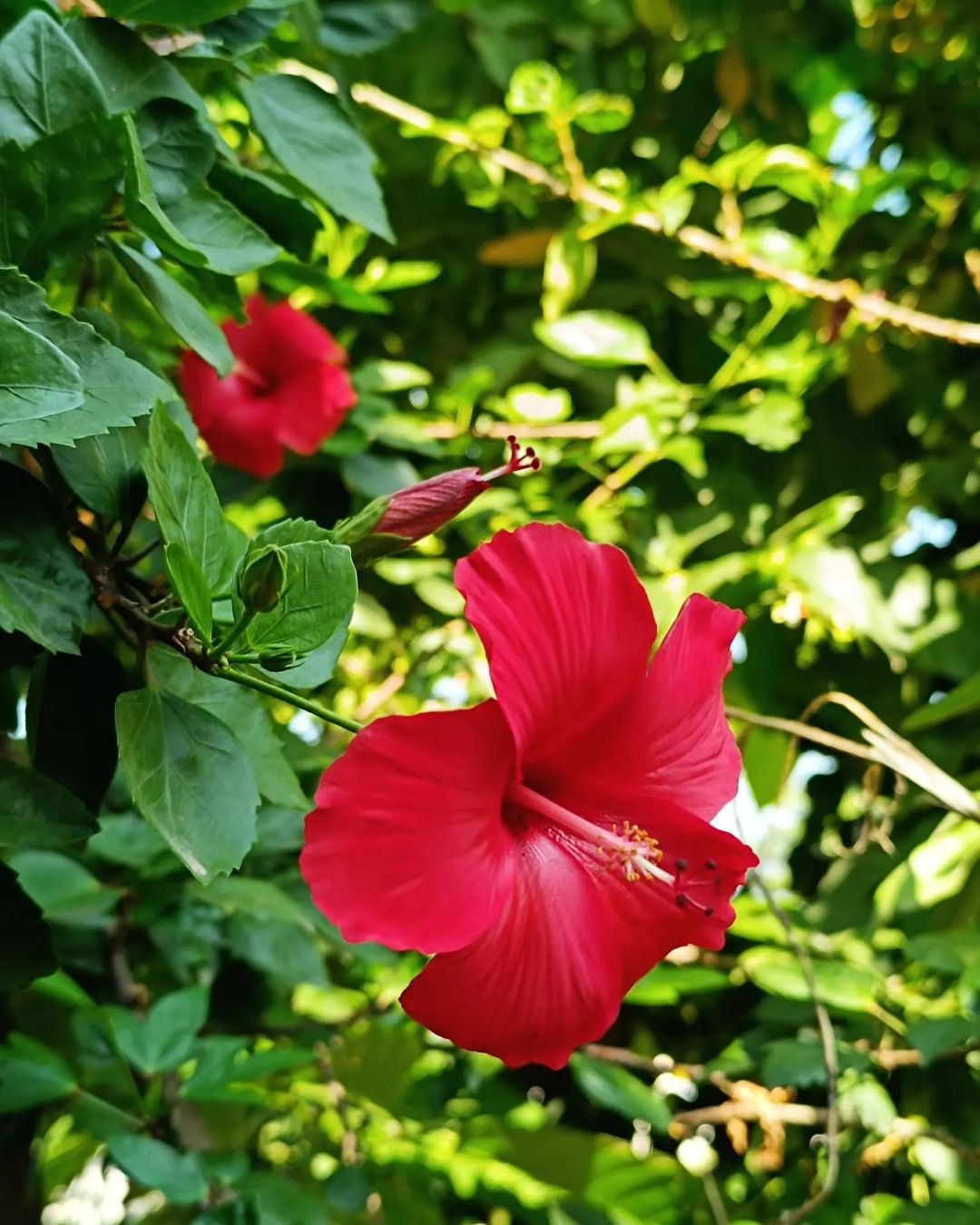
Here’s a short information chart about Hibiscus (Hibiscus rosa-sinensis):
| Attribute | Description |
|---|---|
| Botanical Name | Hibiscus rosa-sinensis |
| Common Name | Hibiscus |
| Plant Type | Flowering shrub |
| Zones | 9-11 |
| Sun Exposure | Full sun to partial shade |
| Soil Type | Well-draining, fertile soil |
| Watering | Regular watering, prefers moist soil |
| Growth Habit | Upright, bushy |
| Height/Spread | 6-12 feet tall, 4-8 feet wide at maturity |
| Special Features | Large, showy flowers in various colors |
The hibiscus is perhaps the most recognizable and iconic Hawaiian flower. With its large, vibrant blooms in shades of red, yellow, pink and orange, the hibiscus is a symbol of tropical beauty and warmth. These flowers are often used in traditional Hawaiian lei-making and are highly revered in Polynesian culture.
Fun Fact: The yellow hibiscus, known as the “Ma’o Hau Hele,” is considered a good luck charm and is believed to grant the power of persuasion.
2. Bird of Paradise
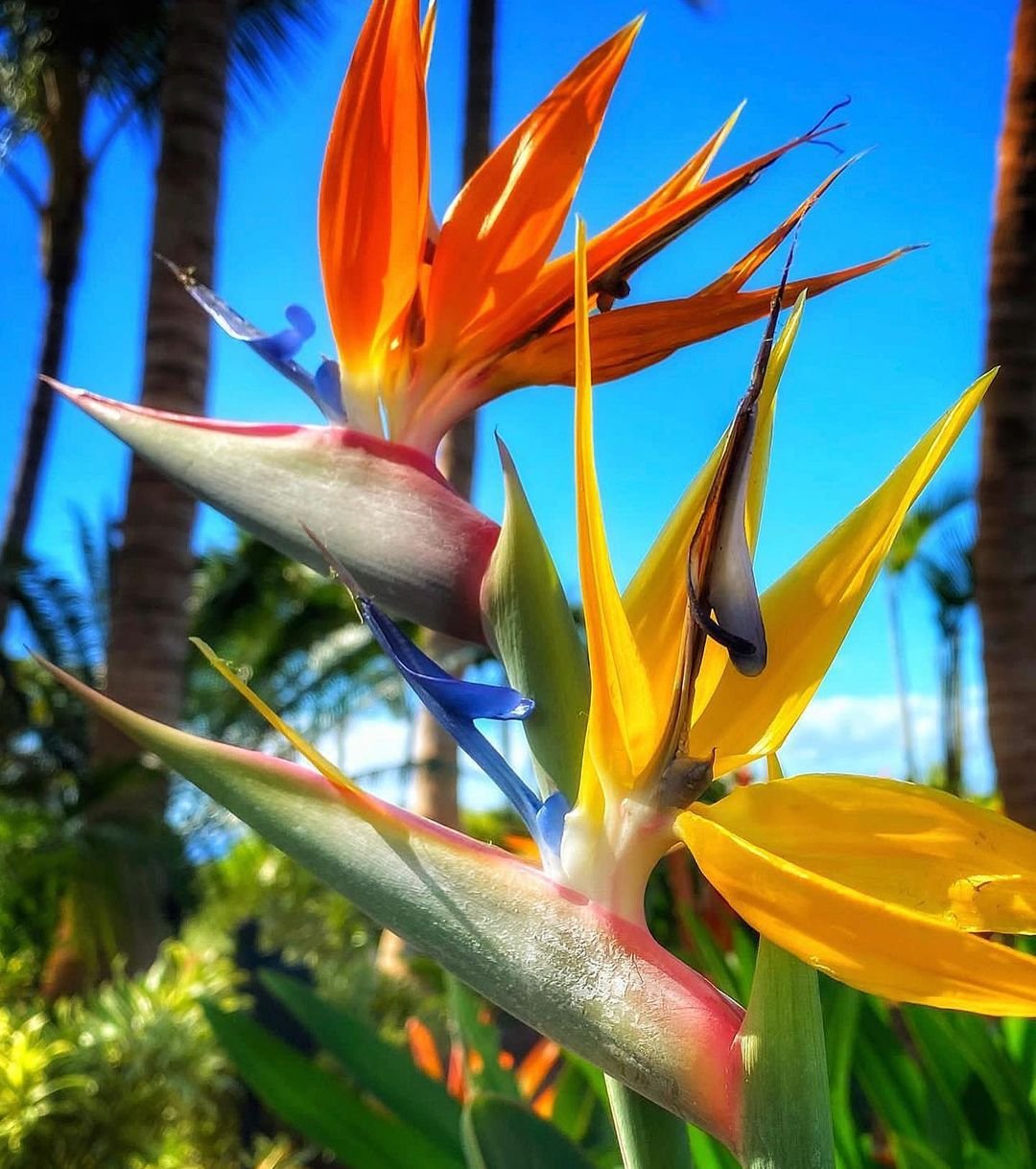
Here’s a short information chart about Bird of Paradise (Strelitzia reginae):
| Attribute | Description |
|---|---|
| Botanical Name | Strelitzia reginae |
| Common Name | Bird of Paradise |
| Plant Type | Perennial herbaceous plant |
| Zones | 9-11 |
| Sun Exposure | Full sun to partial shade |
| Soil Type | Well-draining, sandy soil |
| Watering | Moderate watering, allow soil to dry between watering |
| Growth Habit | Clumping, upright |
| Height/Spread | 3-5 feet tall, 2-4 feet wide at maturity |
| Special Features | Striking, tropical-looking flowers resembling a bird in flight |
The exotic and striking bird of paradise is a true showstopper among Hawaiian flowers. With its distinctive orange and blue petals resembling the plumage of a tropical bird, this flower is a sight to behold. Native to South Africa, the bird of paradise has become a beloved addition to Hawaiian gardens and landscapes.
Fun Fact: The bird of paradise flower is known for its unique pollination process, which involves a specialized bird species called the sunbird.
3. Plumeria
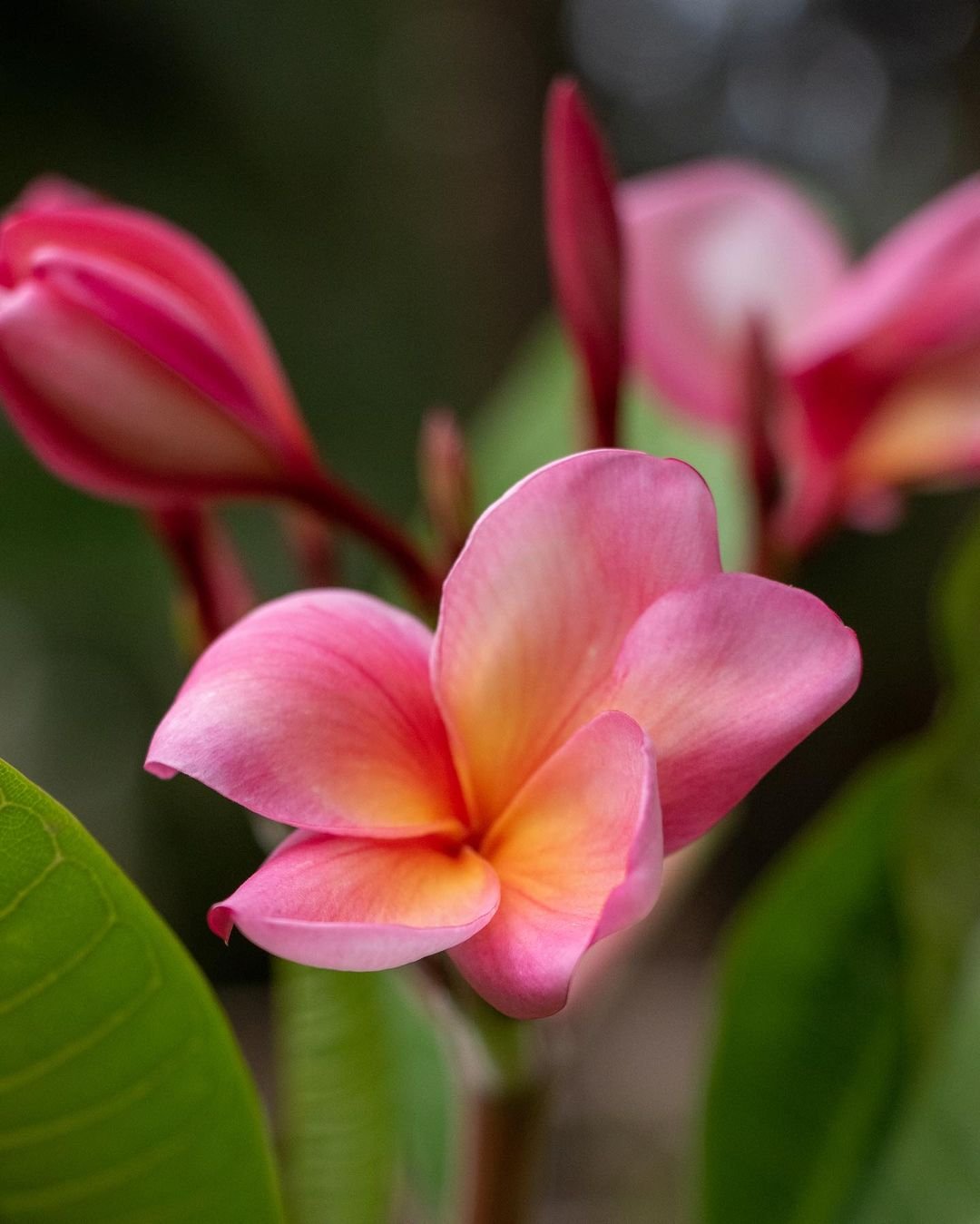
Here’s a short information chart about Plumeria (Plumeria rubra):
| Attribute | Description |
|---|---|
| Botanical Name | Plumeria rubra |
| Common Name | Plumeria, Frangipani |
| Plant Type | Tropical shrub/tree |
| Zones | 10-12 (grown as a houseplant in cooler climates) |
| Sun Exposure | Full sun |
| Soil Type | Well-draining, sandy soil |
| Watering | Moderate watering, allow soil to dry out slightly between watering |
| Growth Habit | Spreading, with thick succulent stems |
| Height/Spread | 10-25 feet tall, 6-12 feet wide at maturity |
| Special Features | Fragrant, colorful flowers in various hues |
Plumeria, or frangipani, is a truly iconic Hawaiian flower known for its delicate, fragrant blooms and lush foliage. These flowers come in a range of colors, including white, yellow, pink and multi-colored varieties. Plumeria leis are a traditional and cherished part of Hawaiian culture, often used in ceremonies and celebrations.
Fun Fact: The plumeria flower has a rich history and symbolism in Hawaiian culture, representing birth, love and new beginnings.
4. Anthurium
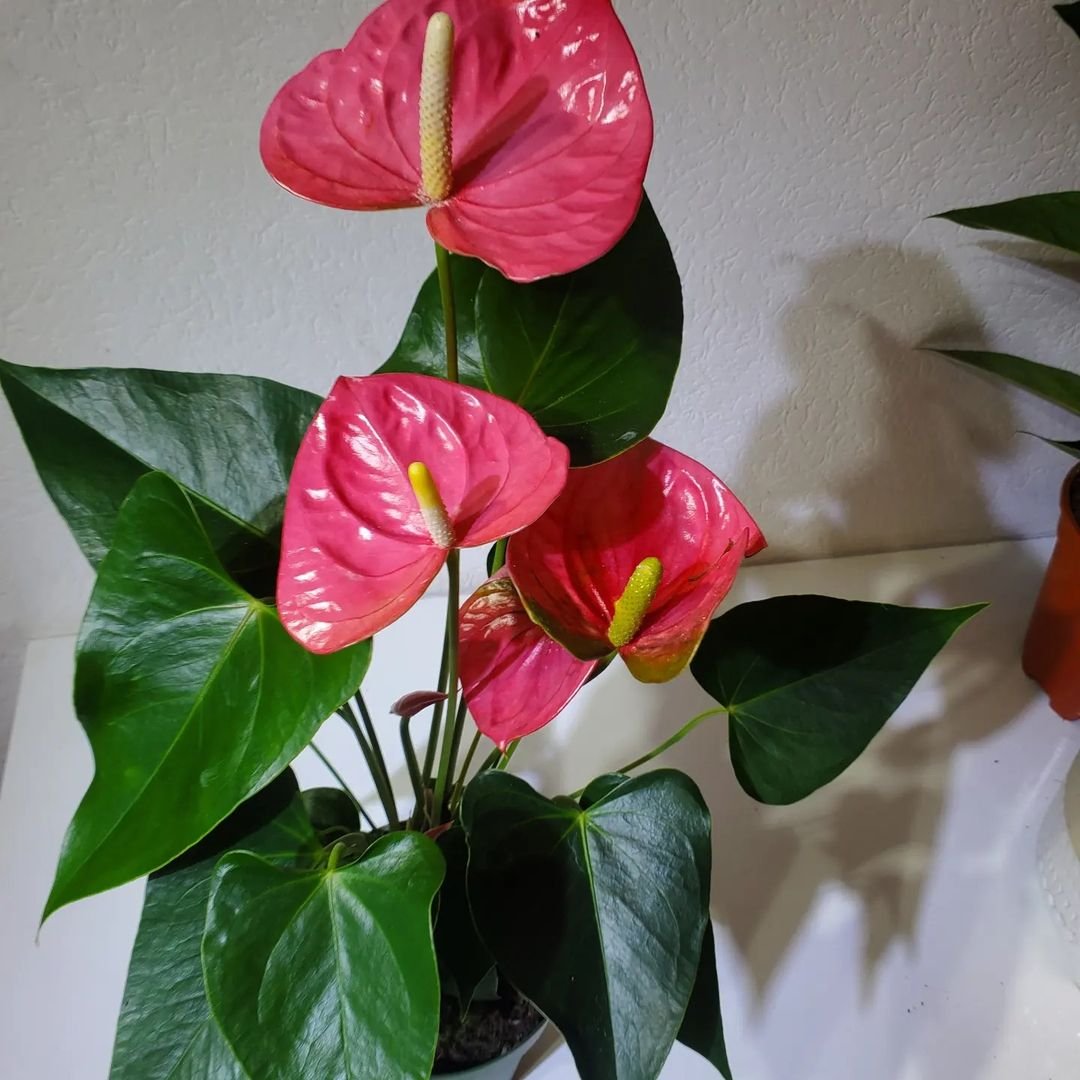
Here’s a short information chart about Anthurium (Anthurium andraeanum):
| Attribute | Description |
|---|---|
| Botanical Name | Anthurium andraeanum |
| Common Name | Anthurium |
| Plant Type | Perennial flowering plant |
| Zones | 10-12 (grown as a houseplant in cooler climates) |
| Sun Exposure | Bright, indirect light |
| Soil Type | Well-draining, porous soil |
| Watering | Moderate watering, allow soil to dry slightly between watering |
| Growth Habit | Upright, with glossy, dark green leaves and colorful, waxy spathes |
| Height/Spread | 1-2 feet tall, 1-2 feet wide at maturity |
| Special Features | Long-lasting, showy flowers in various colors |
The anthurium, also known as the flamingo flower or laceleaf, is a unique and eye-catching Hawaiian flower. Its vibrant, heart-shaped blooms in shades of red, pink and white make it a popular choice for bouquets and floral arrangements. Native to the Americas, the anthurium has found a welcoming home in the tropical climate of Hawaii.
Fun Fact: The anthurium’s colorful blooms are actually modified leaves called spathes, while the actual flowers are tiny and clustered on the central spike.
5. Orchid
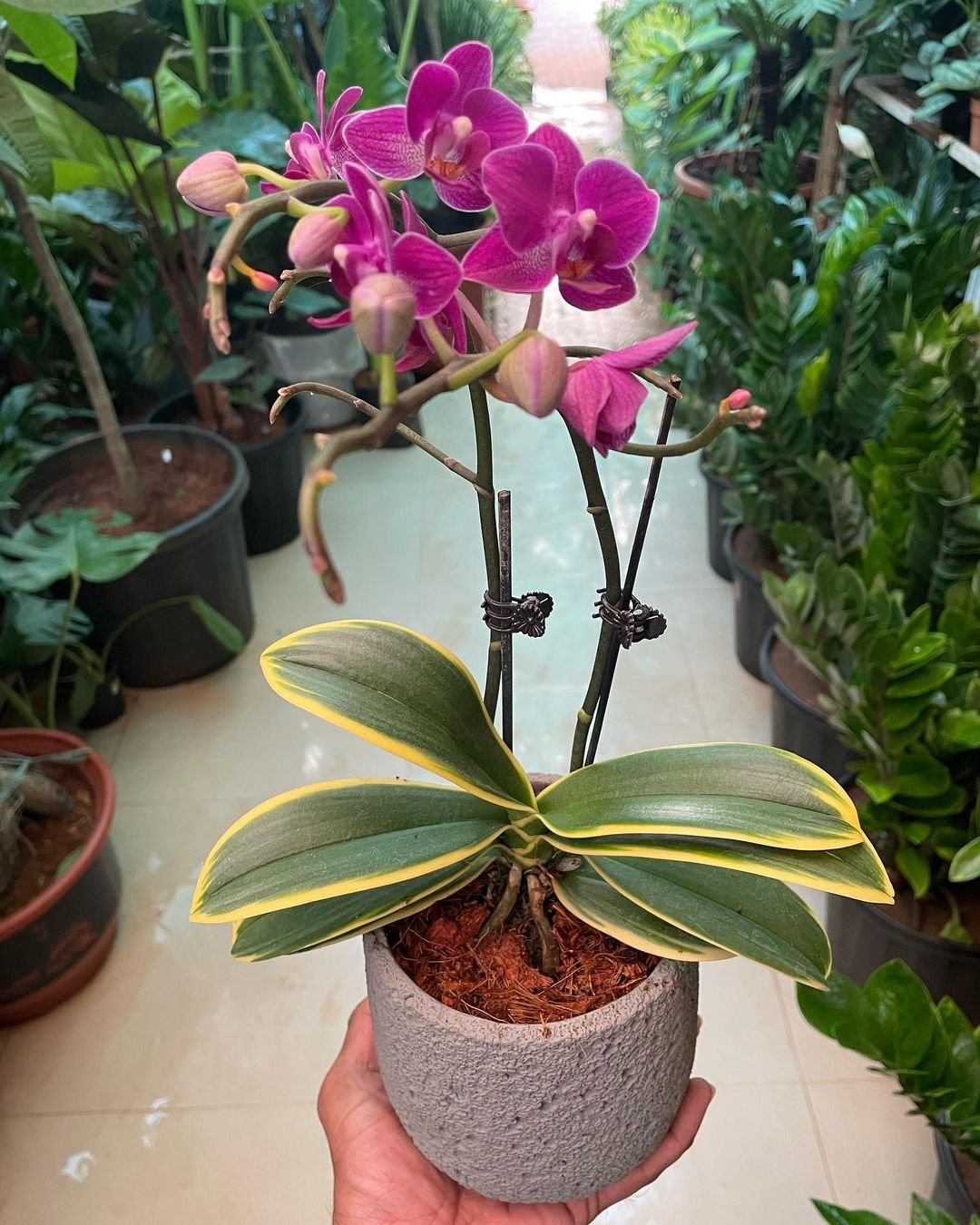
Here’s a short information chart about Orchids (Orchidaceae):
| Attribute | Description |
|---|---|
| Botanical Name | Orchidaceae |
| Common Name | Orchid |
| Plant Type | Perennial flowering plant |
| Zones | Varies widely based on species, many adaptable to indoor conditions |
| Sun Exposure | Indirect light to partial shade |
| Soil Type | Well-draining orchid mix or bark medium |
| Watering | Varied, typically require moderate watering, allowing medium to dry between watering |
| Growth Habit | Diverse, can be epiphytic (growing on trees), terrestrial or lithophytic (growing on rocks) |
| Height/Spread | Varies widely based on species and growth habit |
| Special Features | Exquisite, often fragrant flowers in various shapes, sizes and colors |
Hawaii is home to a diverse array of orchid species, each with its own unique beauty and charm. From the elegant white phalaenopsis to the vibrant and exotic dendrobium, orchids are a beloved part of Hawaiian flowers culture. These delicate and graceful flowers are often used in leis, bouquets, and decorative arrangements.
Fun Fact: The Hawaiian word for orchid is “Okika,” and these flowers hold deep cultural significance, symbolizing love, beauty, and fertility.
6. Bougainvillea
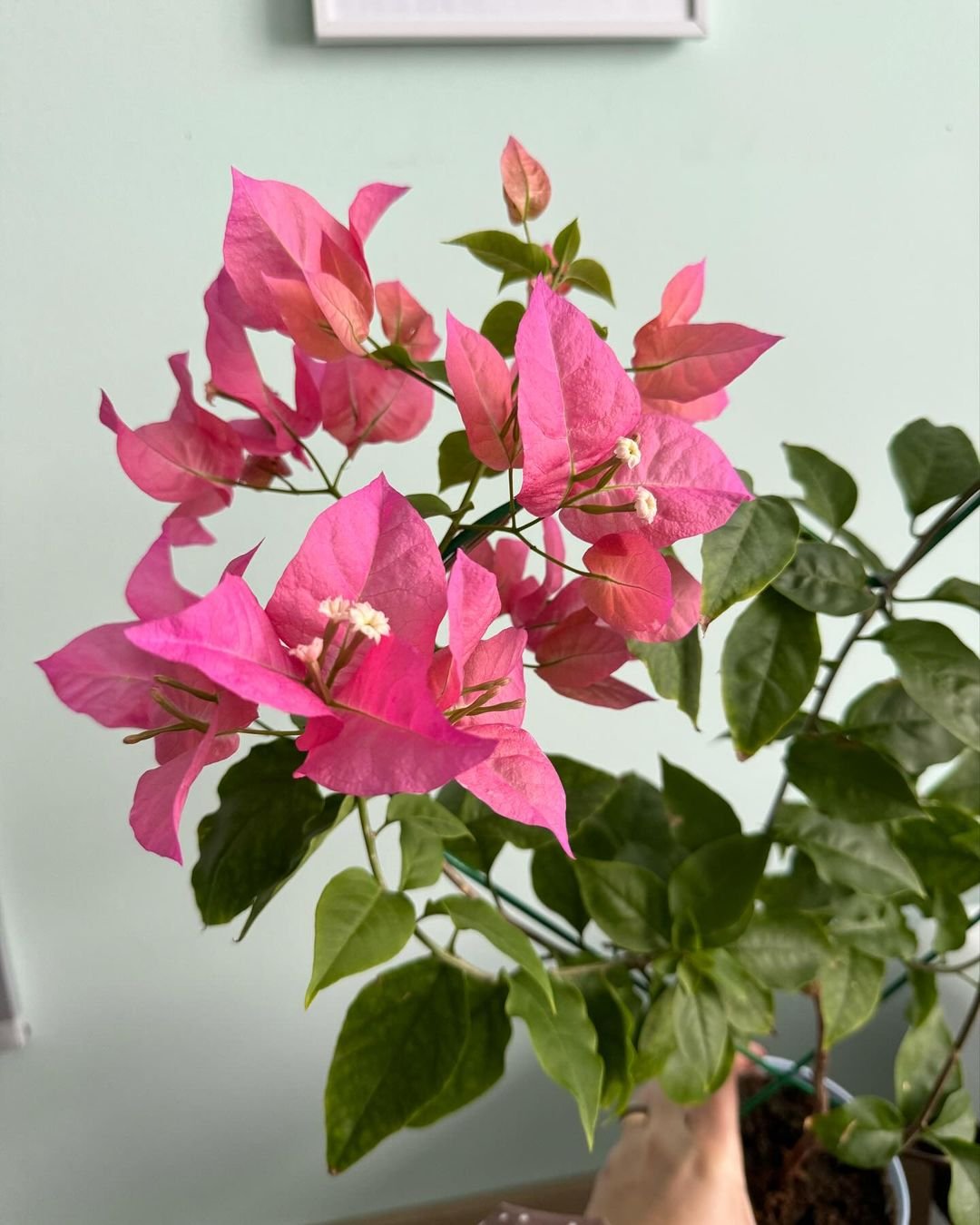
Here’s a short information chart about Bougainvillea (Bougainvillea glabra):
| Attribute | Description |
|---|---|
| Botanical Name | Bougainvillea glabra |
| Common Name | Bougainvillea |
| Plant Type | Vine or shrub |
| Zones | 9-11 |
| Sun Exposure | Full sun |
| Soil Type | Well-draining, sandy or loamy soil |
| Watering | Drought-tolerant once established, prefers dry conditions |
| Growth Habit | Climbing, sprawling |
| Height/Spread | 6-30 feet tall, 3-15 feet wide at maturity |
| Special Features | Showy, colorful bracts (modified leaves) in shades of pink, purple, red or orange |
The vibrant and eye-catching bougainvillea is a true showstopper in Hawaiian flowers. With its bright and colorful bracts (modified leaves) in shades of pink, purple and orange, this flowering plant adds a tropical flair to gardens and public spaces across the islands.
Fun Fact: Despite its striking appearance, the actual flowers of the bougainvillea are tiny and white, nestled within the colorful bracts.
7. Ginger
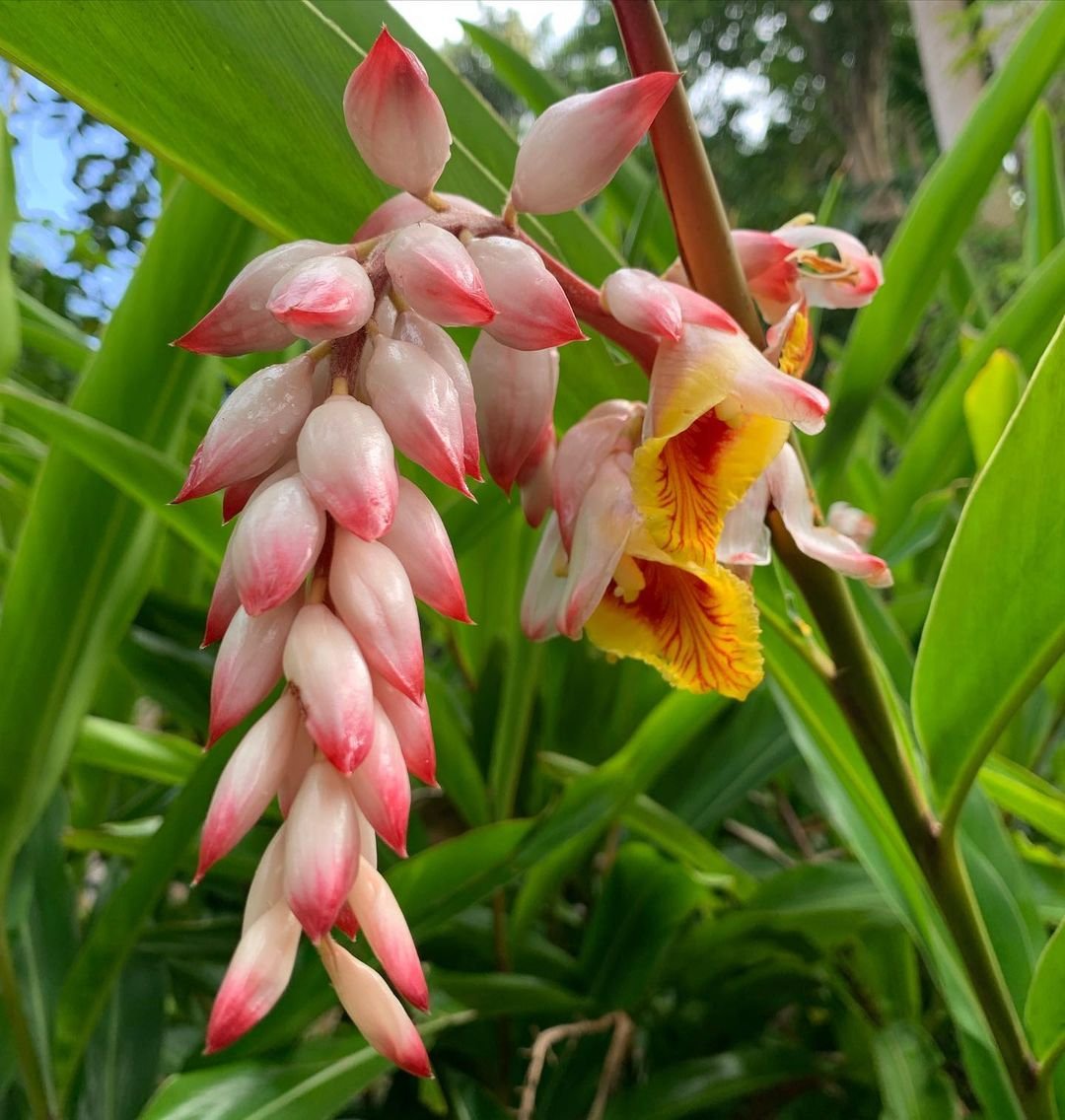
Here’s a short information chart about Ginger (Zingiber officinale):
| Attribute | Description |
|---|---|
| Botanical Name | Zingiber officinale |
| Common Name | Ginger |
| Plant Type | Herbaceous perennial |
| Zones | 9-12 |
| Sun Exposure | Partial shade to full shade |
| Soil Type | Well-draining, fertile soil |
| Watering | Regular watering, keep soil consistently moist |
| Growth Habit | Upright, with thick, reed-like stems |
| Height/Spread | 2-4 feet tall, 1-2 feet wide at maturity |
| Special Features | Edible rhizomes used in cooking and traditional medicine, aromatic foliage |
Ginger is not only a culinary delight but also a beautiful and unique addition to Hawaiian flowers. With its striking, cone-shaped blooms and lush, green foliage, ginger plants add a touch of tropical elegance to any landscape. The flowers are often used in leis and decorative arrangements.
Fun Fact: Ginger is deeply rooted in Hawaiian culture and has been used for centuries in traditional medicine and ceremonies.
8. Puakenikeni
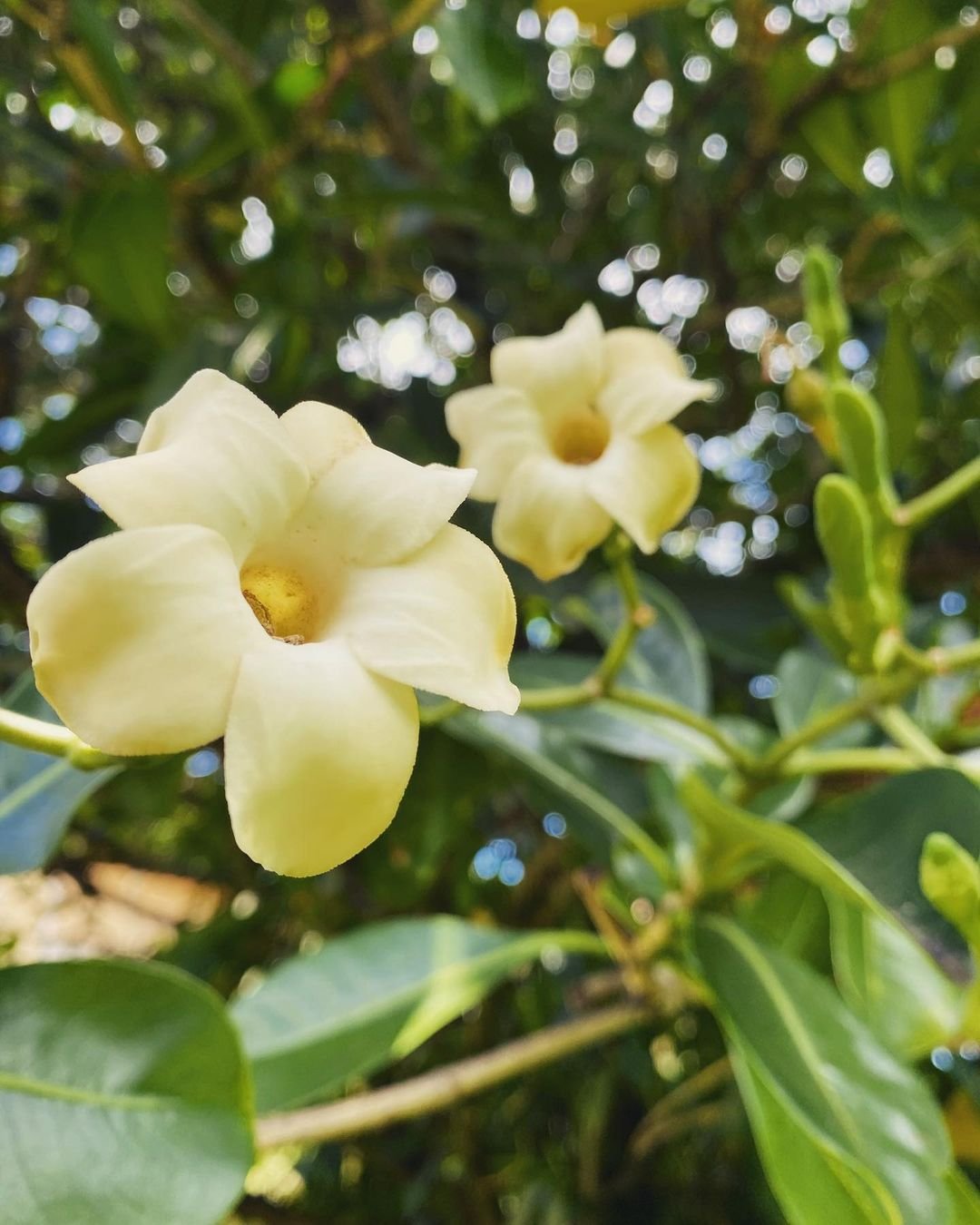
Here’s a short information chart about Puakenikeni (Fagraea berteriana):
| Attribute | Description |
|---|---|
| Botanical Name | Fagraea berteriana |
| Common Name | Puakenikeni |
| Plant Type | Tree or large shrub |
| Zones | 10-12 |
| Sun Exposure | Full sun to partial shade |
| Soil Type | Well-draining, fertile soil |
| Watering | Regular watering, keep soil consistently moist |
| Growth Habit | Upright, dense foliage |
| Height/Spread | Up to 25 feet tall, 10-15 feet wide at maturity |
| Special Features | Highly fragrant, tubular, white flowers with an intoxicating scent |
The puakenikeni is a small, understory tree with incredibly fragrant white flowers that bloom at night. Its sweet scent is often used in Hawaiian flowers lei making.
Fun Fact: According to Hawaiian folklore, the puakenikeni flower was created by the gods for the first Hawaiian couple.
9. Red Ginger
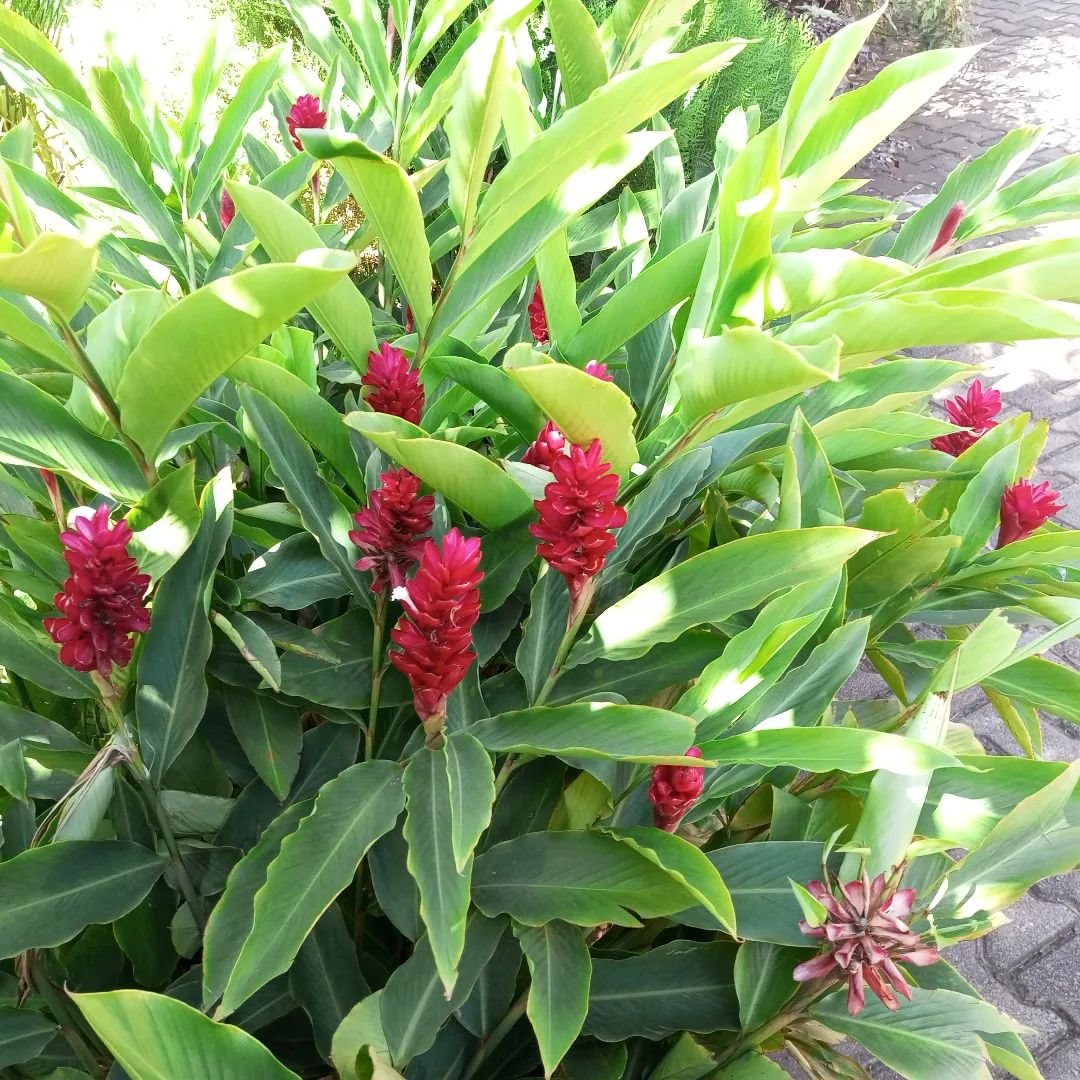
Here’s a short information chart about Red Ginger (Alpinia purpurata):
| Attribute | Description |
|---|---|
| Botanical Name | Alpinia purpurata |
| Common Name | Red Ginger |
| Plant Type | Herbaceous perennial |
| Zones | 10-12 |
| Sun Exposure | Partial shade to full shade |
| Soil Type | Well-draining, fertile soil |
| Watering | Regular watering, keep soil consistently moist |
| Growth Habit | Clumping, with upright stems |
| Height/Spread | 6-8 feet tall, 3-5 feet wide at maturity |
| Special Features | Striking, cone-shaped red inflorescences with showy, long-lasting bracts |
This vibrant, reddish-pink flower with cone-like blooms and striking red bracts provides a bold pop of color in tropical gardens. The red ginger is related to the ginger plant used in cooking.
Fun Fact: Early Hawaiian royalty adorned themselves with red ginger flowers, which were seen as a symbol of status.
10. Naupaka
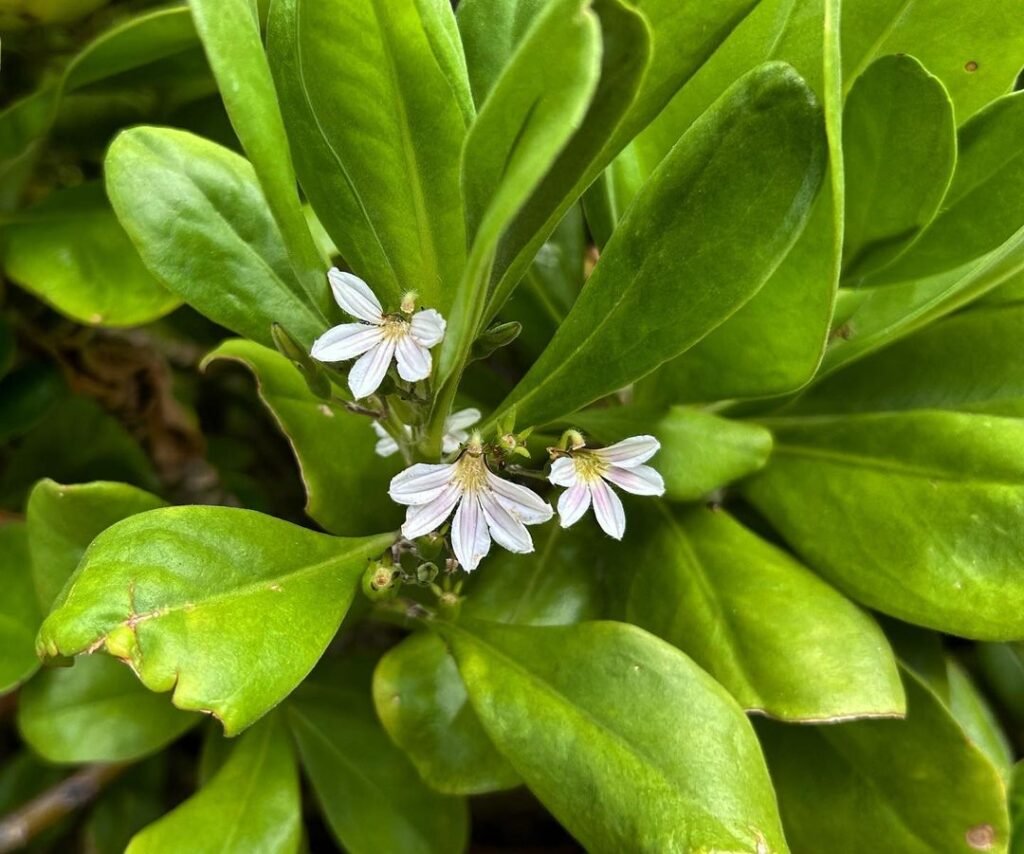
Here’s a short information chart about Naupaka (Scaevola sericea):
| Attribute | Description |
|---|---|
| Botanical Name | Scaevola sericea |
| Common Name | Naupaka |
| Plant Type | Shrub or groundcover |
| Zones | 10-11 |
| Sun Exposure | Full sun to partial shade |
| Soil Type | Well-draining, sandy soil |
| Watering | Regular watering, prefers consistently moist soil |
| Growth Habit | Low-growing, spreading |
| Height/Spread | 1-3 feet tall, 3-6 feet wide at maturity |
| Special Features | Unique half-flowers, white to lavender in color, often found near coastal areas |
The delicate, half-flowered naupaka is an iconic beach plant with small white blooms. According to legend, the flower represents two lovers separated for eternity, with the semicircular blooms symbolizing their broken hearts.
Fun Fact: The naupaka flower only blooms as a full circle when growing near the ocean, uniting the two estranged lovers.
11. Canna Lily
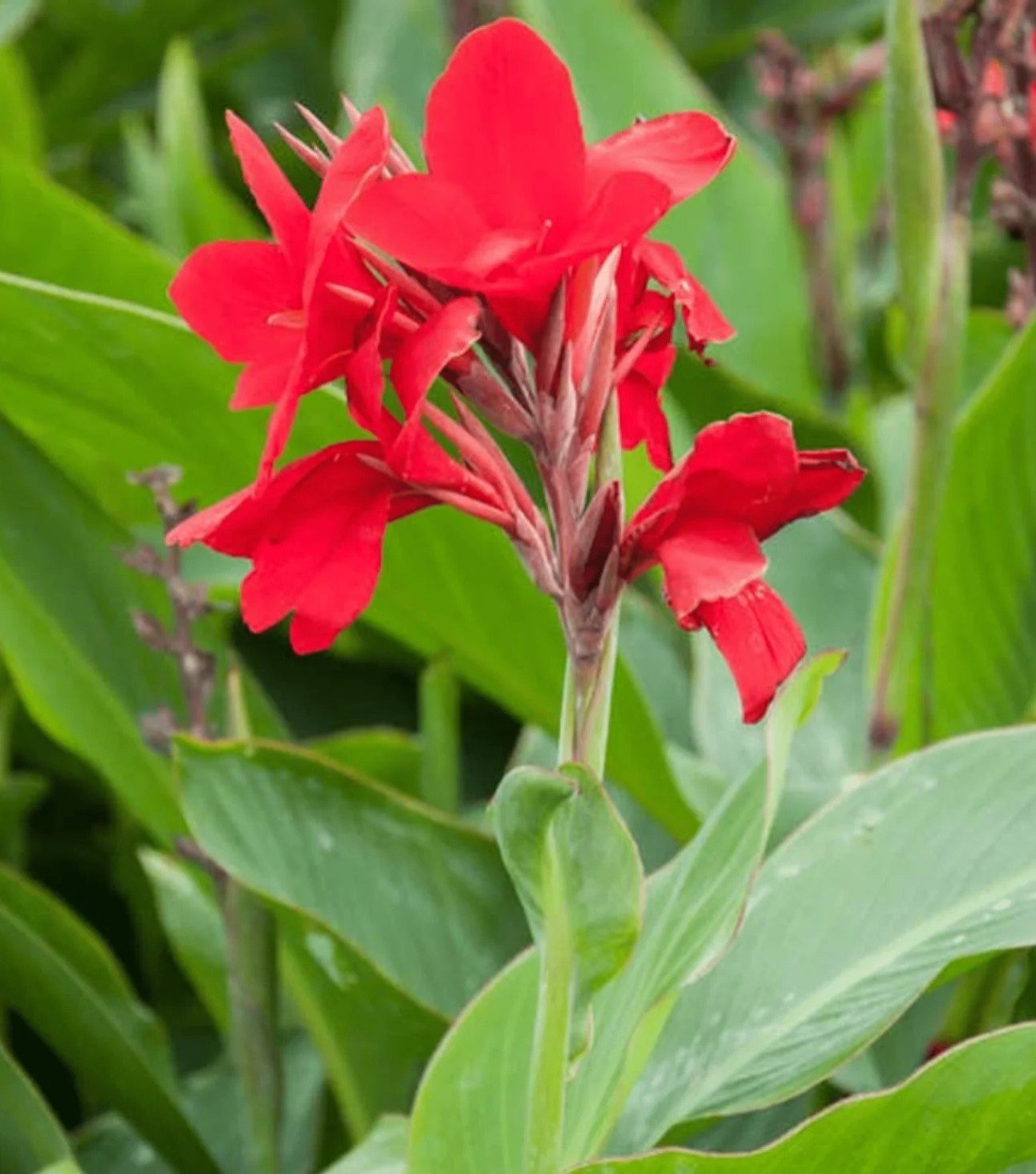
Here’s a short information chart about Canna Lily (Canna indica):
| Attribute | Description |
|---|---|
| Botanical Name | Canna indica |
| Common Name | Canna Lily |
| Plant Type | Perennial rhizomatous herb |
| Zones | 8-11 |
| Sun Exposure | Full sun to partial shade |
| Soil Type | Well-draining, fertile soil |
| Watering | Regular watering, keep soil consistently moist |
| Growth Habit | Upright, with large, paddle-shaped leaves and tall flower spikes |
| Height/Spread | 3-8 feet tall, 1-3 feet wide at maturity |
| Special Features | Showy flowers in various colors, including red, orange, yellow and pink |
Big, showy canna lilies with ruffled petals in vibrant reds, yellows and oranges add plenty of tropical flair. These rhizomatous plants are common in Hawaiian gardens and landscapes.
Fun Fact: Ancient Hawaiians crafted leis from canna lily leaves and planted canna lilies around their homes for protection.
12. Pikaki
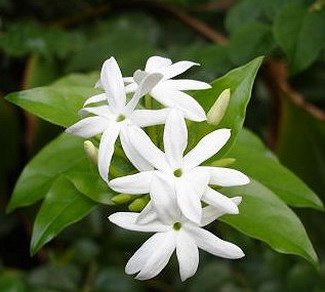
Here’s some information about it:
| Attribute | Description |
|---|---|
| Botanical Name | Jasminum sambac |
| Common Name | Pikake, Arabian Jasmine |
| Plant Type | Evergreen shrub or vine |
| Zones | 9-11 (can be grown indoors in cooler climates) |
| Sun Exposure | Full sun to partial shade |
| Soil Type | Well-draining, fertile soil |
| Watering | Regular watering, keep soil consistently moist |
| Growth Habit | Upright or climbing |
| Height/Spread | 6-10 feet tall, 3-6 feet wide at maturity |
| Special Features | Highly fragrant, white flowers resembling miniature roses |
Several jasmine varieties like the Arabian jasmine (pikake) and Sampaguita (pikake haole) thrive in Hawaii. These small, powerfully fragrant white blossoms are beloved for their sweet scent and inclusion in Hawaiian leis And this is just the beginning! From the delicate and fragrant pikake (Arabian jasmine) to the vibrant and striking heliconia, Hawaii is home to a stunning array of flowers that will captivate your senses and ignite your appreciation for the natural wonders of these islands.
Fun Fact: The jasmine’s intoxicating perfume is believed to attract love and good fortune according to Hawaiian tradition.
13. ʻOhiʻa Lehua
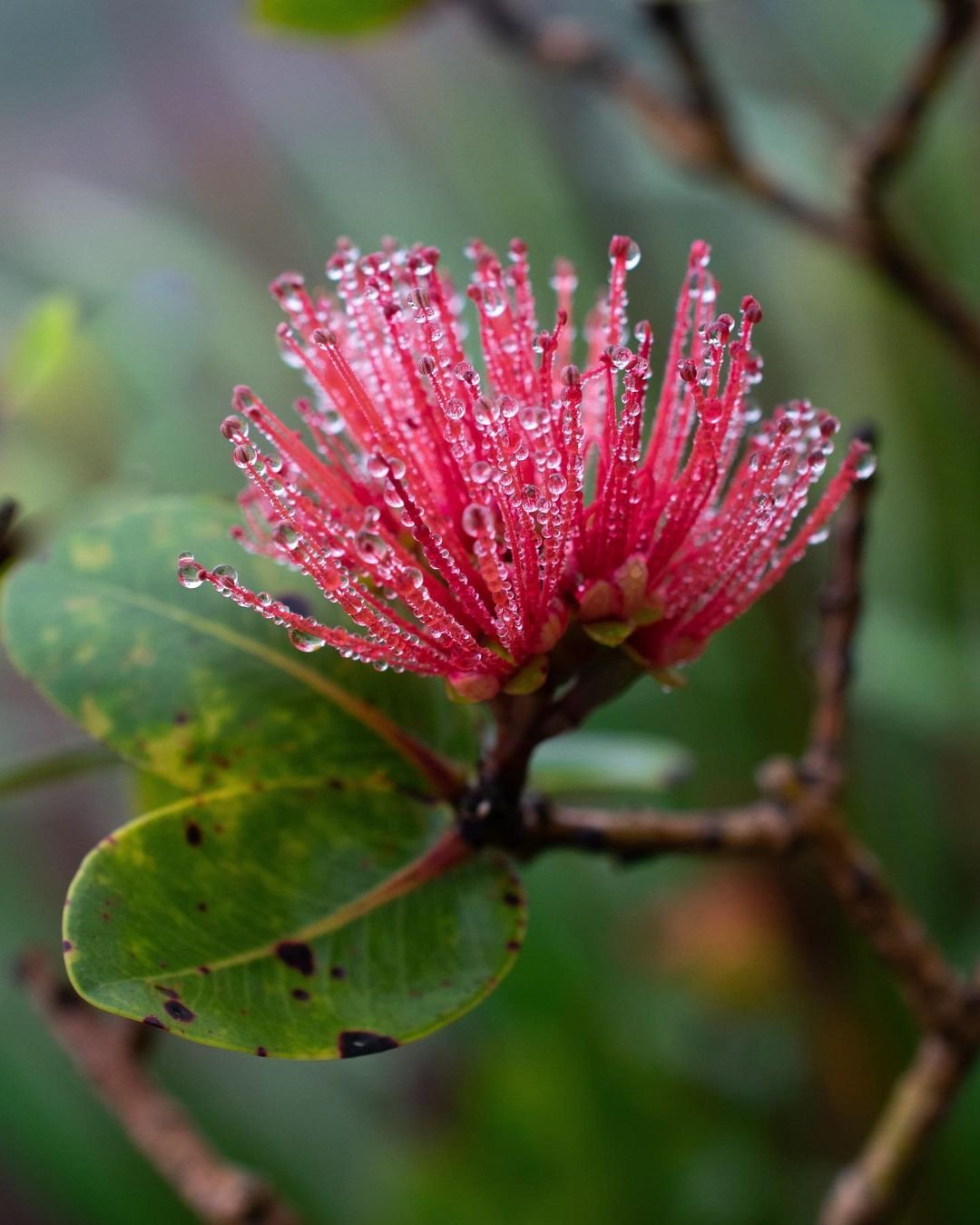
Here’s a short information chart about ʻOhiʻa Lehua (Metrosideros polymorpha):
| Attribute | Description |
|---|---|
| Botanical Name | Metrosideros polymorpha |
| Common Name | ʻOhiʻa Lehua |
| Plant Type | Tree |
| Zones | 9-11 |
| Sun Exposure | Full sun |
| Soil Type | Well-draining, acidic soil |
| Watering | Moderate watering, drought-tolerant once established |
| Growth Habit | Upright, with dense foliage |
| Height/Spread | 20-80 feet tall, 10-20 feet wide at maturity |
| Special Features | Showy, vibrant red flowers; culturally significant in Hawaiian culture |
The ʻohiʻa lehua is not only the iconic native tree of Hawaii but also produces magnificent red brush-like flowers that bloom after rainy periods. These brilliant flowers are significant in Hawaiian mythology.
Fun Fact: Legend says the ʻohiʻa lehua tree was created when a tragic love story between two people turned one into the tree and the other into the beautiful flower.
14. Peacock Flower
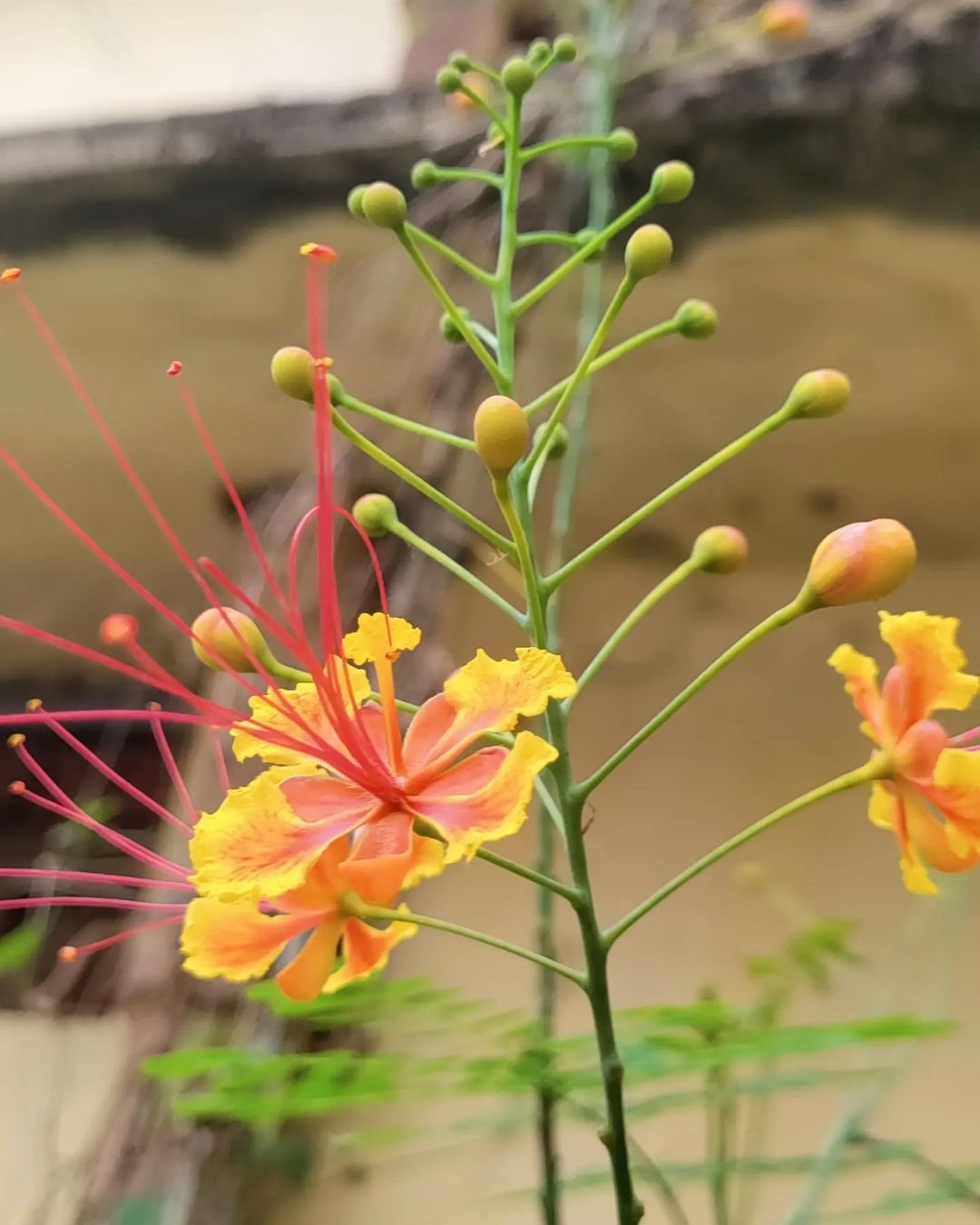
Here’s a short information chart about Peacock Flower (Caesalpinia pulcherrima):
| Attribute | Description |
|---|---|
| Botanical Name | Caesalpinia pulcherrima |
| Common Name | Peacock Flower |
| Plant Type | Perennial shrub or small tree |
| Zones | 9-11 |
| Sun Exposure | Full sun |
| Soil Type | Well-draining, fertile soil |
| Watering | Regular watering, drought-tolerant once established |
| Growth Habit | Upright, with spreading branches |
| Height/Spread | 6-10 feet tall, 6-8 feet wide at maturity |
| Special Features | Showy, colorful flowers in shades of red, orange and yellow, reminiscent of a peacock’s tail |
The vibrant peacock flower features showy orange and red blooms that resemble the feathers of a male peacock. These tropical flowers add a burst of color to Hawaiian gardens and landscapes.
Fun Fact: In Hawaiian culture, the peacock flower is associated with royalty and is believed to attract good luck and prosperity.
15. Lokelani
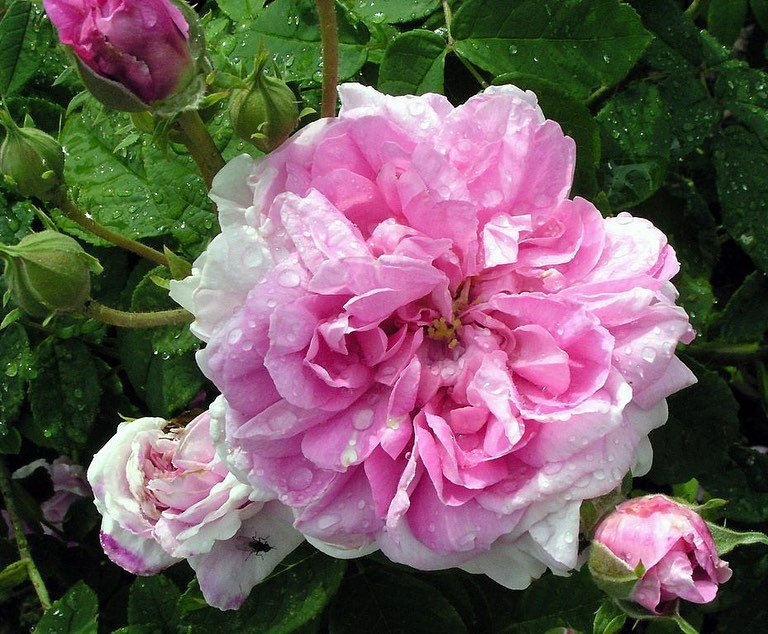
Here’s a short information chart about the Damask Rose:
| Attribute | Description |
|---|---|
| Botanical Name | Rosa damascena |
| Common Name | Damask Rose, Lokelani (in Hawaiian) |
| Plant Type | Shrub |
| Zones | 5-9 |
| Sun Exposure | Full sun |
| Soil Type | Well-draining, loamy soil |
| Watering | Regular watering, keep soil consistently moist |
| Growth Habit | Bushy, spreading |
| Height/Spread | 4-6 feet tall, 3-4 feet wide at maturity |
| Special Features | Highly fragrant, double flowers in shades of pink, used in perfumery and culinary applications |
The lokelani or damask rose, is a fragrant and delicate pink rose that is highly prized in Hawaiian lei-making. Its sweet scent and elegant petals make it a popular choice for floral arrangements and bouquets.
Fun Fact: The name “lokelani” translates to “heavenly rose,” reflecting the flower’s divine beauty and aroma.
16. White Ginger
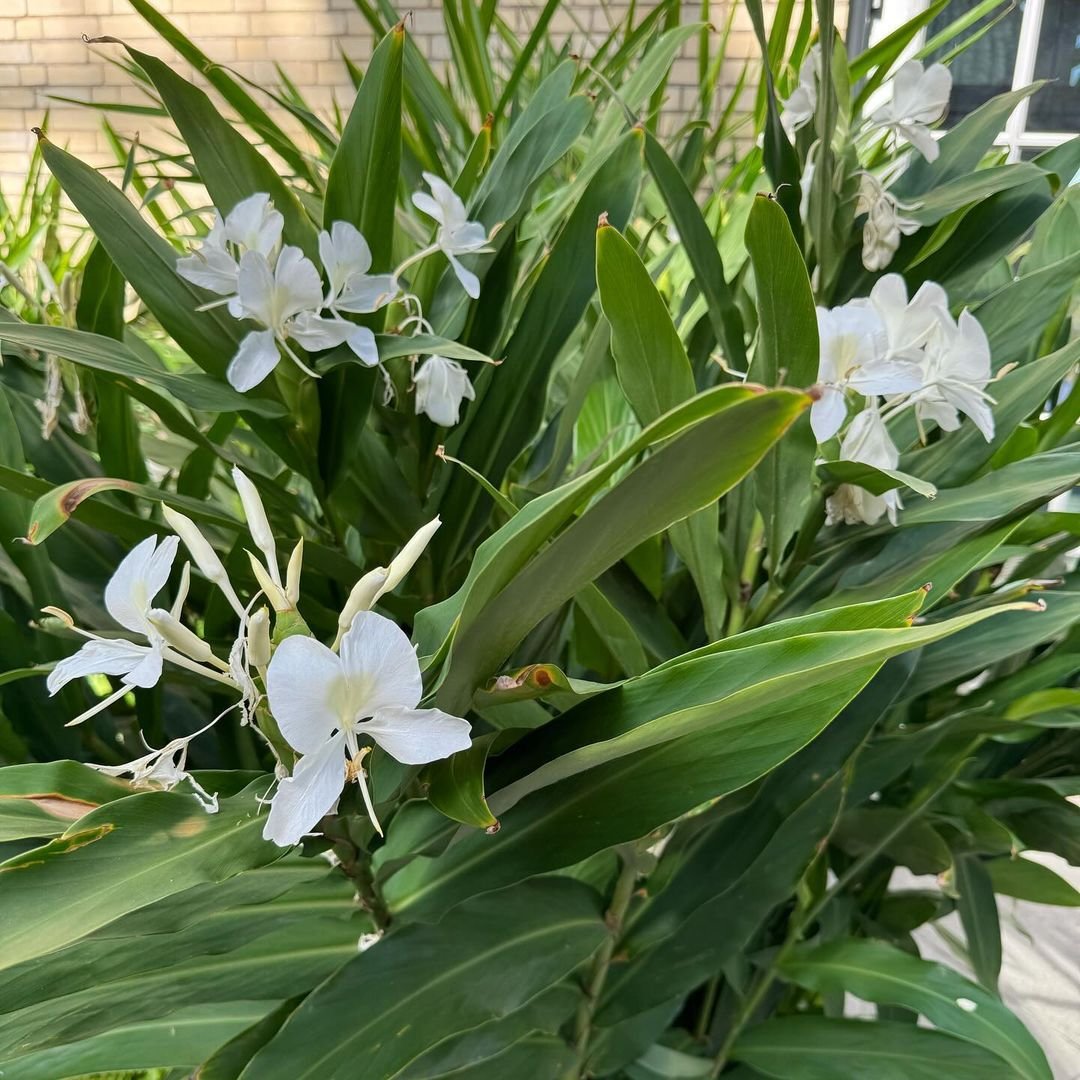
Here’s a short information chart about White Ginger (Hedychium coronarium):
| Attribute | Description |
|---|---|
| Botanical Name | Hedychium coronarium |
| Common Name | White Ginger |
| Plant Type | Perennial herbaceous plant |
| Zones | 8-11 |
| Sun Exposure | Partial shade to full sun |
| Soil Type | Rich, moist, well-draining soil |
| Watering | Regular watering, keep soil consistently moist |
| Growth Habit | Upright, clumping |
| Height/Spread | 4-8 feet tall, 3-5 feet wide at maturity |
| Special Features | Fragrant white flowers resembling ginger, used in floral arrangements |
White ginger, also known as butterfly ginger or garland flower, produces clusters of fragrant white blooms with a sweet, distinctive scent. These flowers are commonly used in Hawaiian leis and floral decorations.
Fun Fact: The white ginger flower is associated with good fortune and is often used in ceremonial events and religious offerings in Hawaiian culture.
17. Pua Mele
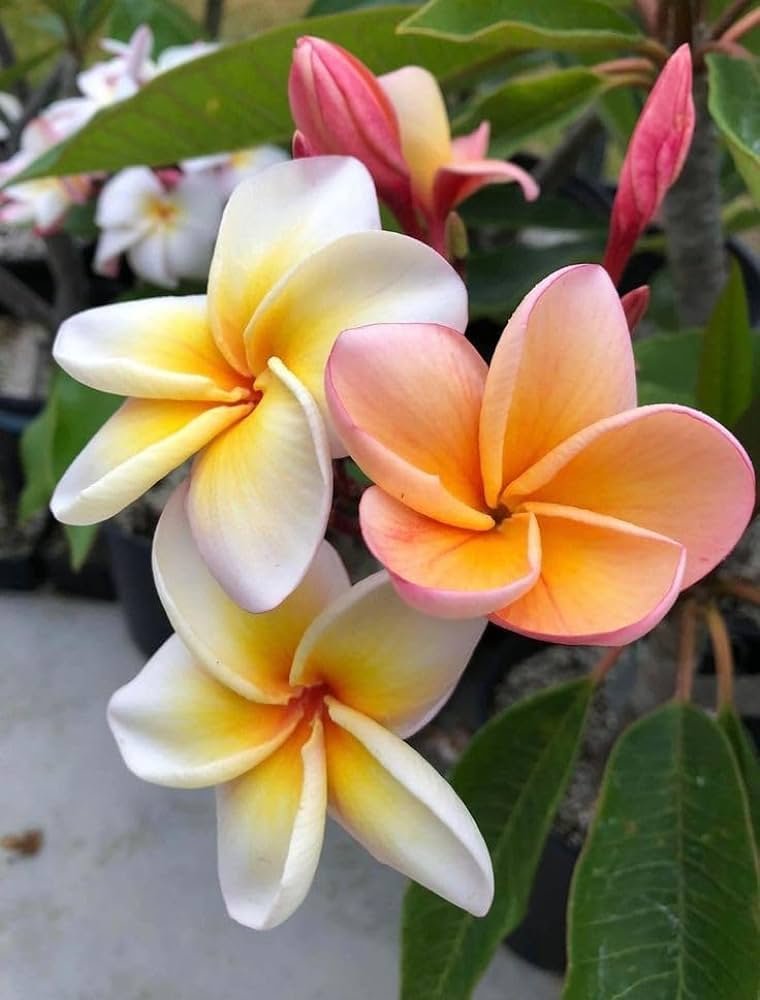
Here’s a short information chart about Pua Mele (Plumeria hybrids) :
| Attribute | Description |
|---|---|
| Botanical Name | Plumeria hybrids |
| Common Name | Pua Mele, Plumeria hybrids |
| Plant Type | Shrub or small tree |
| Zones | 10-12 (often grown as houseplants in cooler climates) |
| Sun Exposure | Full sun |
| Soil Type | Well-draining soil mix or sandy soil |
| Watering | Regular watering, allow soil to dry out slightly between watering |
| Growth Habit | Upright, branching |
| Height/Spread | Varies depending on the hybrid variety |
| Special Features | Showy, fragrant flowers in various colors and fragrances |
Pua mele, or plumeria hybrids, are a diverse group of vibrant and fragrant flowers that come in a wide range of colors, including pink, yellow, white, and multi-colored varieties. These showy blossoms are a beloved part of Hawaiian lei-making.
Fun Fact: The different colors of pua mele flowers are said to carry specific meanings in Hawaiian culture, with yellow representing joy and white representing purity.
18. Protea
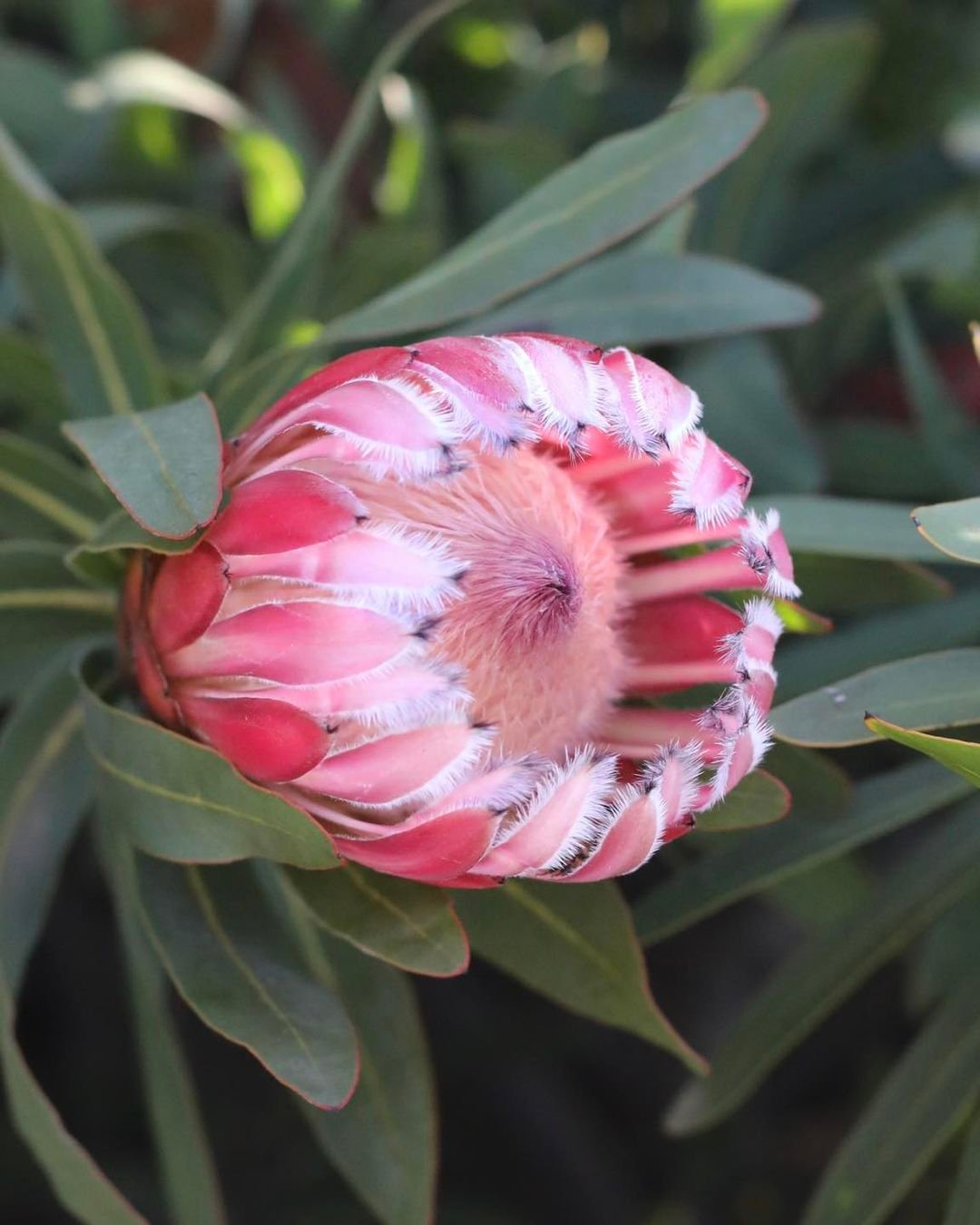
Here’s a short information chart about Protea (Protea species):
| Attribute | Description |
|---|---|
| Botanical Name | Protea species |
| Common Name | Protea |
| Plant Type | Shrub or small tree |
| Zones | Varies widely based on species, typically 8-11 |
| Sun Exposure | Full sun |
| Soil Type | Well-draining, acidic soil |
| Watering | Low to moderate watering, drought-tolerant once established |
| Growth Habit | Upright, bushy |
| Height/Spread | Varies widely based on species and cultivar |
| Special Features | Unique, showy flowers resembling artichokes or pincushions |
Although not native to Hawaii, various protea species have become popular in Hawaiian landscapes and floral arrangements. These unique and striking flowers come in a variety of shapes and colors, adding an exotic touch to tropical gardens.
Fun Fact: Protea flowers are known for their incredible longevity and can last for several weeks when properly cared for, making them a popular choice for long-lasting floral decorations.
19. Kou
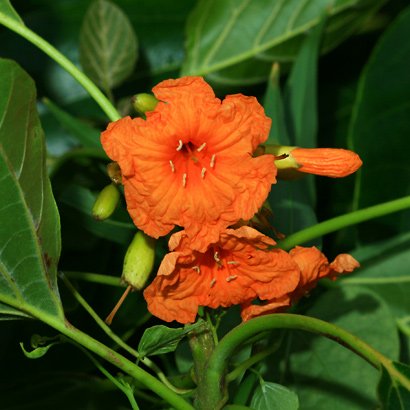
Here’s a short information chart about Kou (Cordia subcordata):
| Attribute | Description |
|---|---|
| Botanical Name | Cordia subcordata |
| Common Name | Kou |
| Plant Type | Tree |
| Zones | 10-12 |
| Sun Exposure | Full sun |
| Soil Type | Well-draining, sandy soil |
| Watering | Regular watering, drought-tolerant once established |
| Growth Habit | Upright, spreading |
| Height/Spread | 30-60 feet tall, 20-40 feet wide at maturity |
| Special Features | Glossy green leaves, fragrant white flowers, used in traditional Hawaiian crafts |
The kou, also known as the Hawaiian coral tree, produces clusters of vibrant orange-yellow blooms that resemble coral formations. These flowers are not only beautiful but also hold cultural significance in Hawaiian tradition
Fun Fact: In Hawaiian mythology, the kou tree is associated with the god of healing and was used for various medicinal purposes by ancient Hawaiians.
20. Aloalo
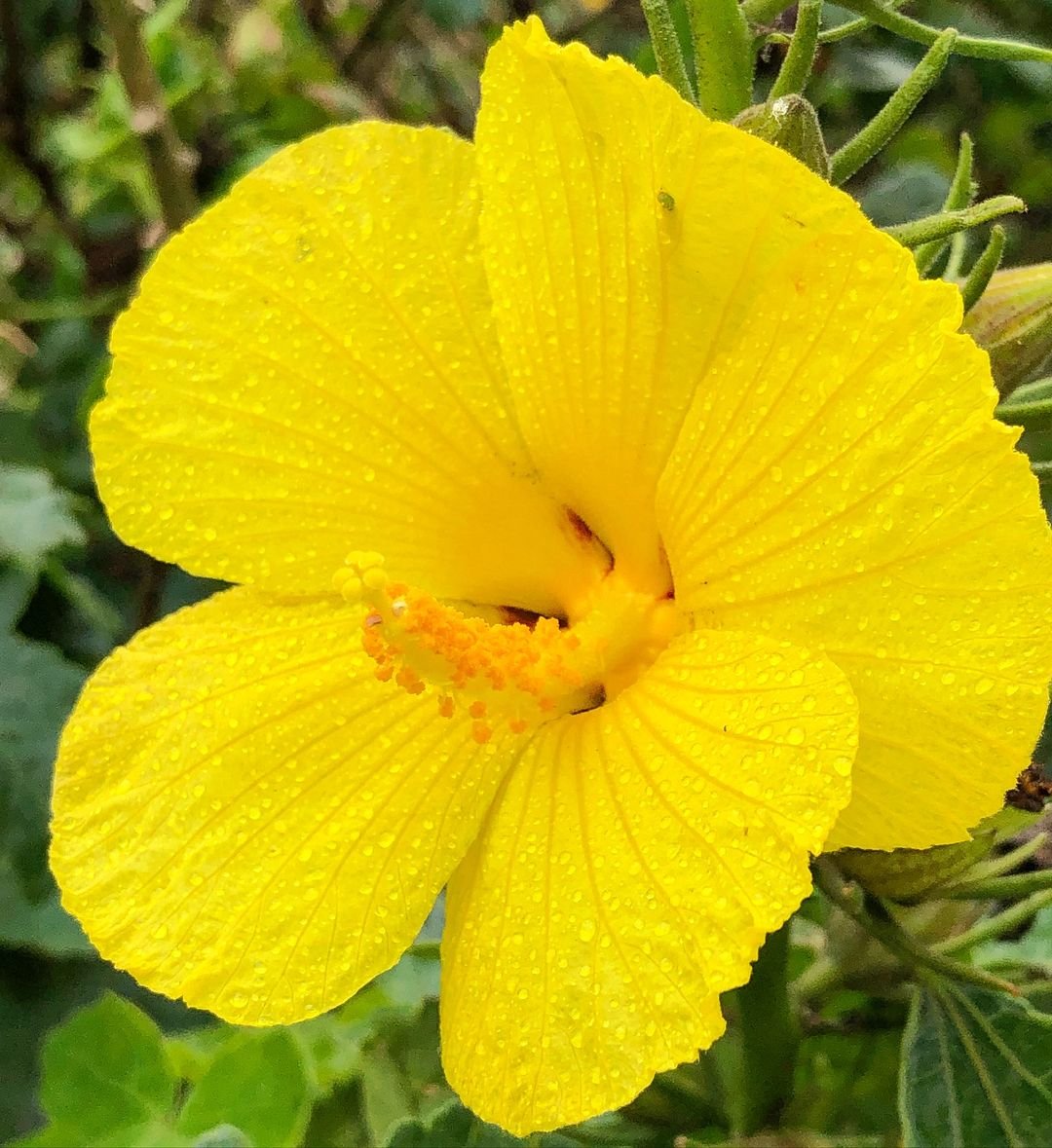
Here’s a short information chart about Aloalo (Hibiscus brackenridgei):
| Attribute | Description |
|---|---|
| Botanical Name | Hibiscus brackenridgei |
| Common Name | Aloalo |
| Plant Type | Shrub or small tree |
| Zones | 10-11 |
| Sun Exposure | Full sun |
| Soil Type | Well-draining soil |
| Watering | Regular watering, drought-tolerant once established |
| Growth Habit | Upright, branching |
| Height/Spread | 10-20 feet tall, 6-12 feet wide at maturity |
| Special Features | Large, showy yellow flowers, state flower of Hawaii |
The aloalo, also known as the Hawaiian hibiscus, is a rare and endangered native species featuring delicate yellow flowers with a deep crimson center. It is one of the few hibiscus varieties naturally occurring in Hawaii.
Fun Fact: The aloalo was once widely used in traditional Hawaiian medicines and has significant cultural value, leading to efforts to protect and conserve this unique flower.
21. Ohawai
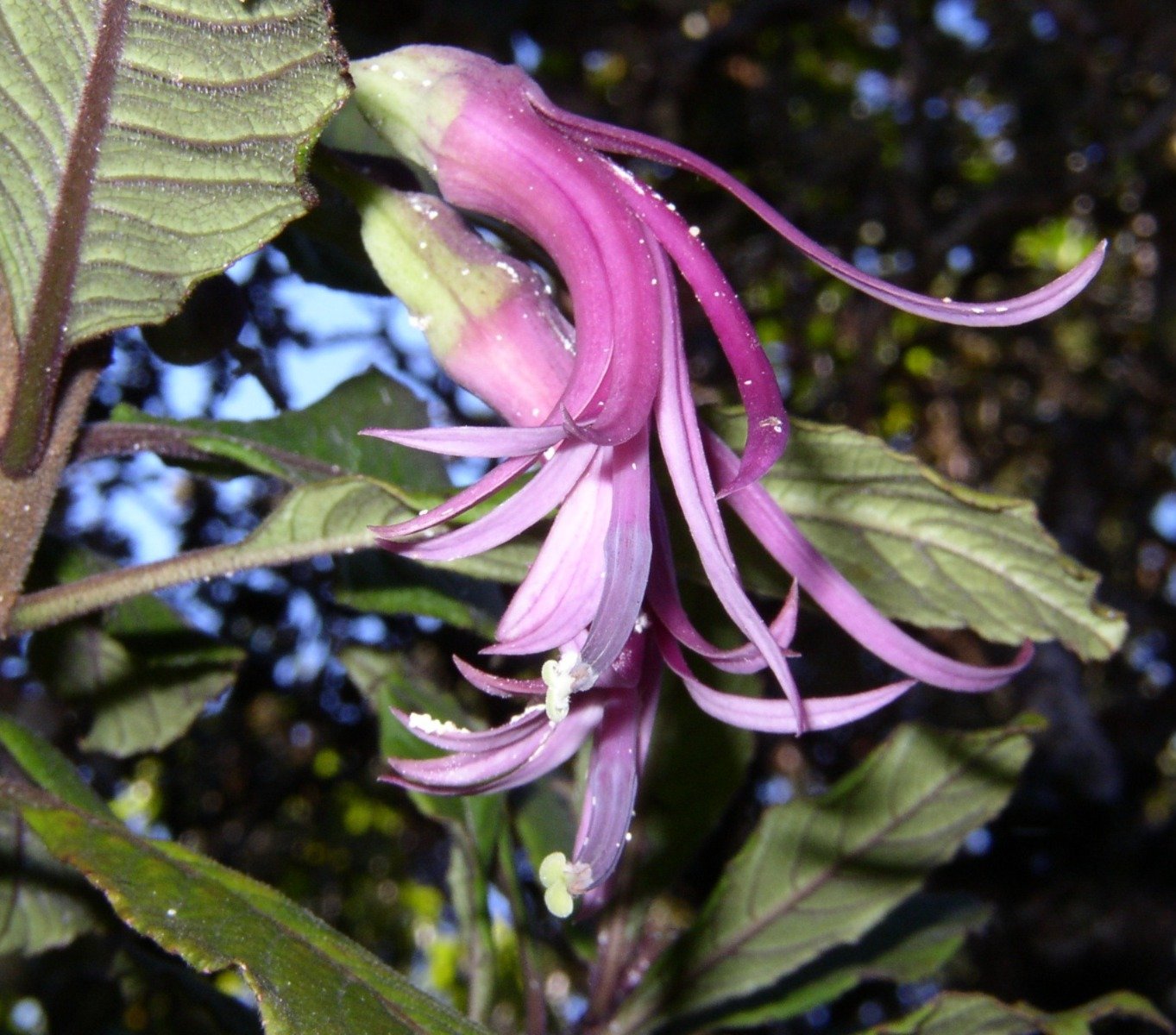
Here’s the short information chart for ʻŌhāwai (Clermontia species):
| Attribute | Description |
|---|---|
| Botanical Name | Various Clermontia species |
| Common Name | ʻŌhāwai |
| Plant Type | Herbaceous perennial |
| Zones | 9-11 (Tropical and subtropical regions) |
| Sun Exposure | Partial shade to full shade |
| Soil Type | Well-draining soil, rich in organic matter |
| Watering | Moderate, prefers consistently moist soil |
| Growth Habit | Clumping habit with tall stems and broad leaves |
| Height/Spread | Varies depending on species, typically 2-5 feet tall with a spread of 1-3 feet |
| Special Features | Unique flowers, adapted to shade, native to Hawaiian islands |
The ʻōhāwai is a genus of endemic Hawaiian plants that produce vibrant, tubular flowers in shades of red, green, and white. These flowers are often found in the rainforests of the Hawaiian Islands and hold cultural significance for Native Hawaiians.
Fun Fact: The ʻōhāwai flowers were traditionally used in lei-making and were believed to have medicinal properties by ancient Hawaiians.
22. Nanu
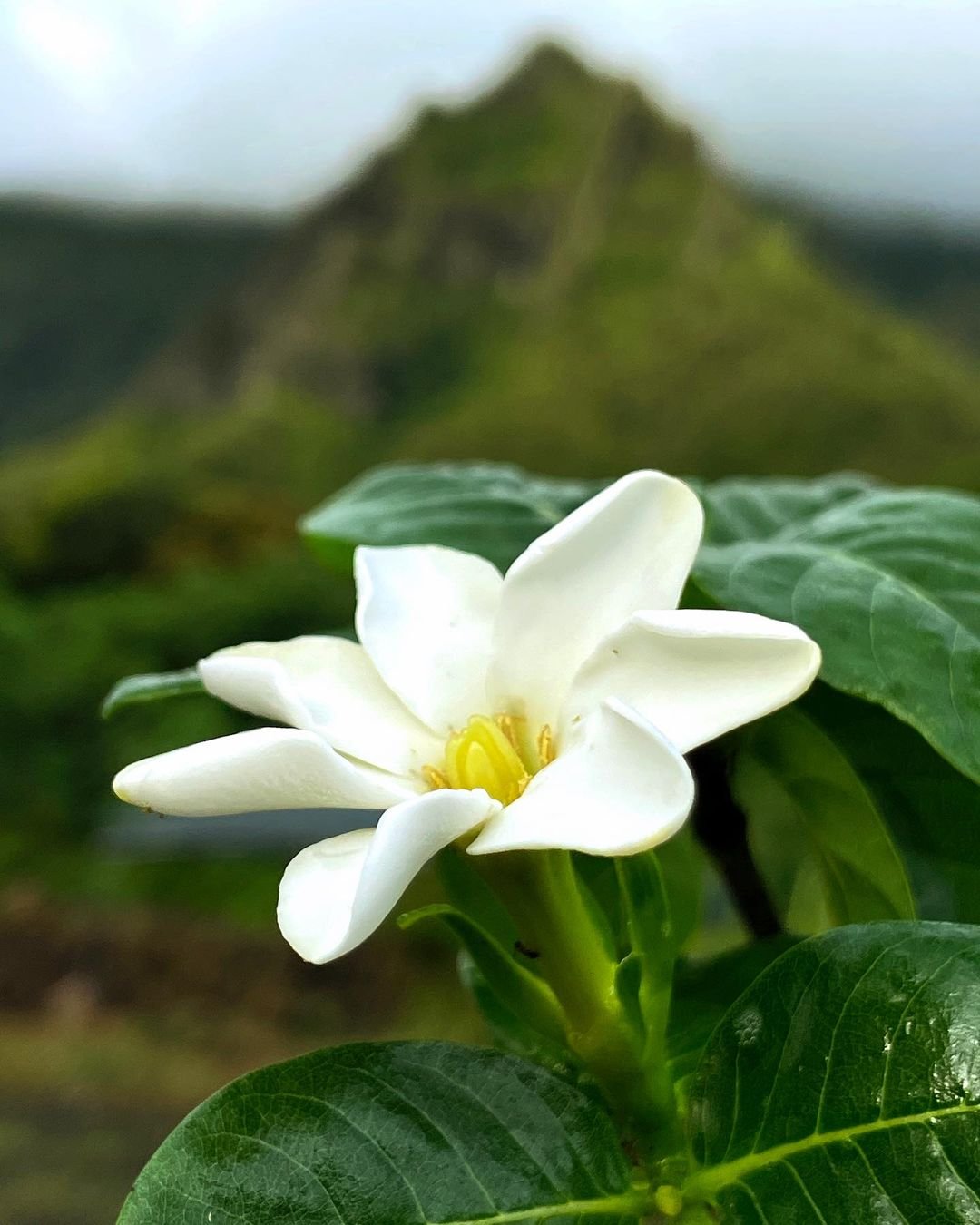
Here’s a short information chart about Nanu (Gardenia brighamii):
| Attribute | Description |
|---|---|
| Botanical Name | Gardenia brighamii |
| Common Name | Nānū |
| Plant Type | Shrub |
| Zones | 10-12 |
| Sun Exposure | Full sun to partial shade |
| Soil Type | Well-draining soil |
| Watering | Regular watering, keep soil consistently moist |
| Growth Habit | Upright, dense foliage |
| Height/Spread | 6-10 feet tall, 4-8 feet wide at maturity |
| Special Features | Fragrant white flowers, endemic to Hawaii, endangered species |
The Nanu or Hawaiian gardenia, is a rare and endangered species featuring fragrant white flowers with a distinctive yellow center. This unique gardenia is found only on certain Hawaiian Islands and is protected by conservation efforts.
Fun Fact: The Nanu flower was once extensively used in traditional Hawaiian hula and its perfume was highly prized by Hawaiian royalty.
23. Kamani
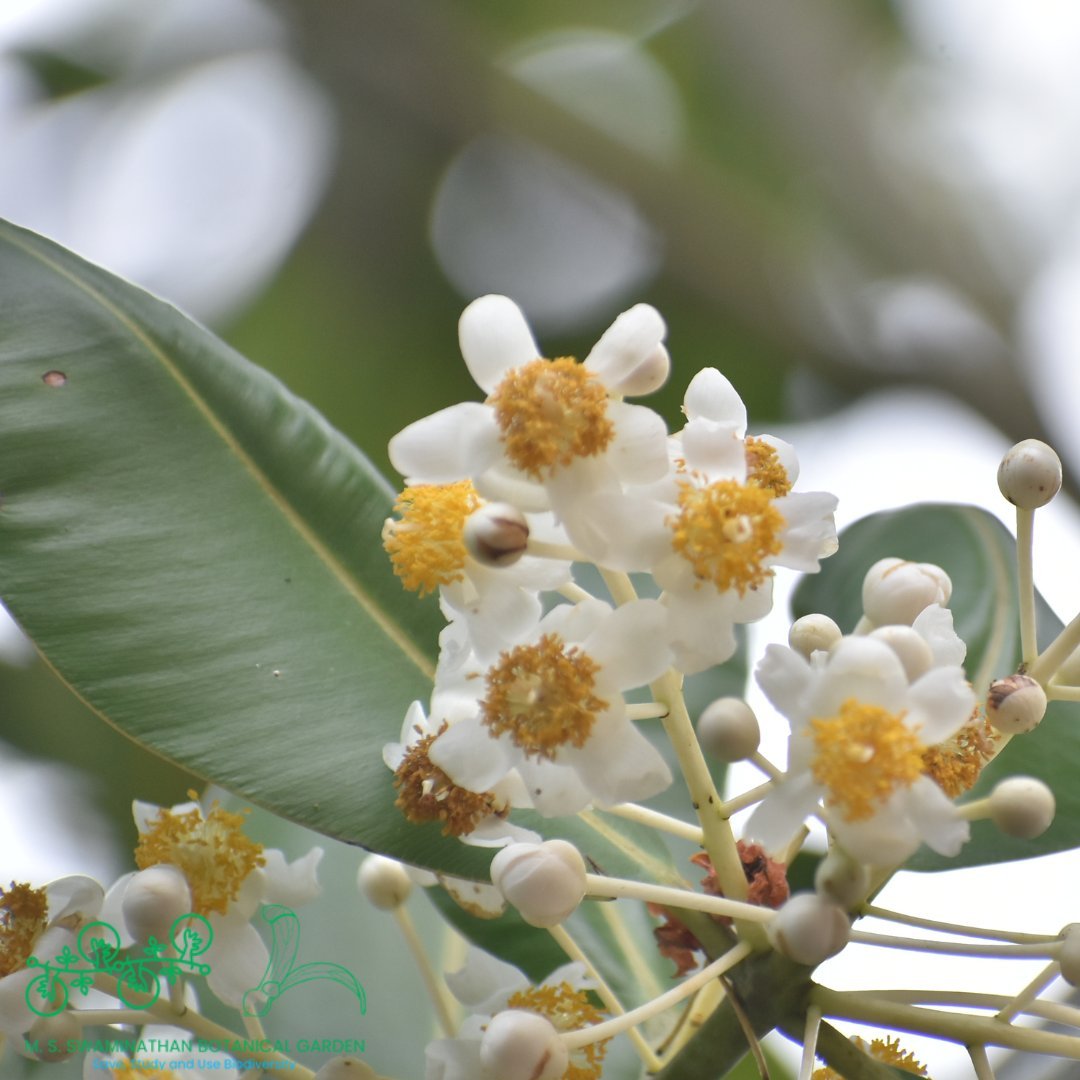
here’s a short information chart about Kamani (Calophyllum inophyllum):
| Attribute | Description |
|---|---|
| Botanical Name | Calophyllum inophyllum |
| Common Name | Kamani |
| Plant Type | Tree |
| Zones | 10-12 (Tropical regions) |
| Sun Exposure | Full sun to partial shade |
| Soil Type | Well-draining soil, prefers sandy or loamy soil |
| Watering | Regular watering, drought tolerant once established |
| Growth Habit | Evergreen tree with a rounded crown |
| Height/Spread | Can reach up to 30-60 feet in height, spreading canopy 20-40 feet wide |
| Special Features | Produces fragrant white flowers and round fruits, used for timber and medicinal purposes |
The kamani, or Indian laurel, is a coastal tree with small, beautiful white flowers that bloom throughout the year. Its flowers are often used in Hawaiian lei-making and have a sweet, subtle fragrance.
Fun Fact: The kamani tree holds great cultural significance in Hawaii, and its wood was traditionally used for crafting canoes, containers, and other important items.
24. pohinahina
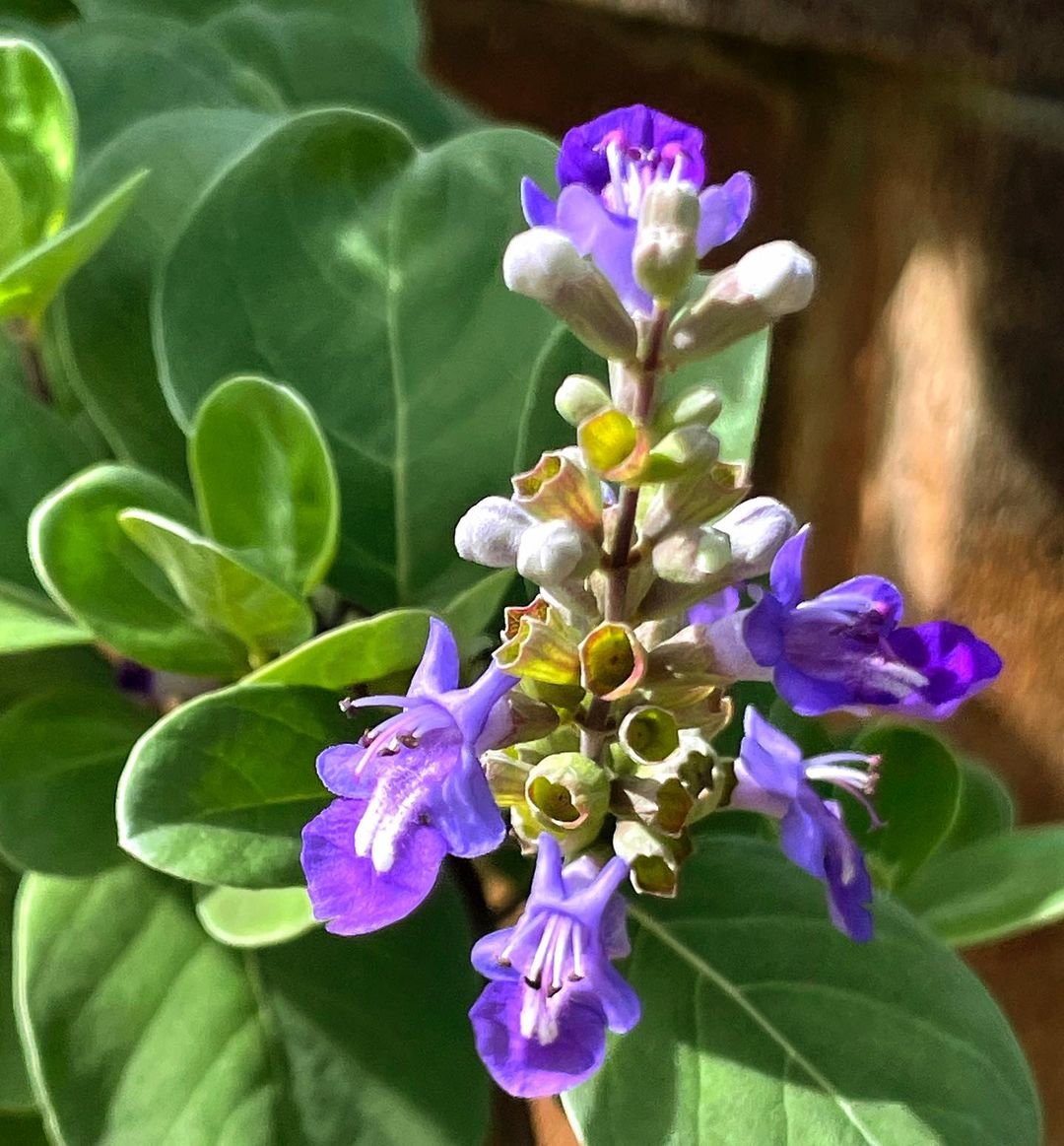
Here’s the short information chart for Pōhinahina (Vitex rotundifolia):
| Attribute | Description |
|---|---|
| Botanical Name | Vitex rotundifolia |
| Common Name | Pohinahina |
| Plant Type | Shrub or small tree |
| Zones | 10-11 (Tropical and subtropical regions) |
| Sun Exposure | Full sun to partial shade |
| Soil Type | Well-draining soil, tolerates various soil types |
| Watering | Moderate, drought tolerant once established |
| Growth Habit | Evergreen shrub or small tree with a spreading habit |
| Height/Spread | Typically grows 6-15 feet tall, with a spread of 6-12 feet |
| Special Features | Fragrant lavender to purple flowers, attracts butterflies and bees |
The pohinahina, also known as the Hawaiian beach vitex, is a coastal shrub with striking purple-blue flower spikes that bloom in the summer months. Its vibrant blossoms add a pop of color to Hawaiian landscapes.
Fun Fact: The pohinahina flower was traditionally used in Hawaiian lei-making and was believed to have spiritual and medicinal properties by ancient Hawaiians.
25. Nanu-i-Pua
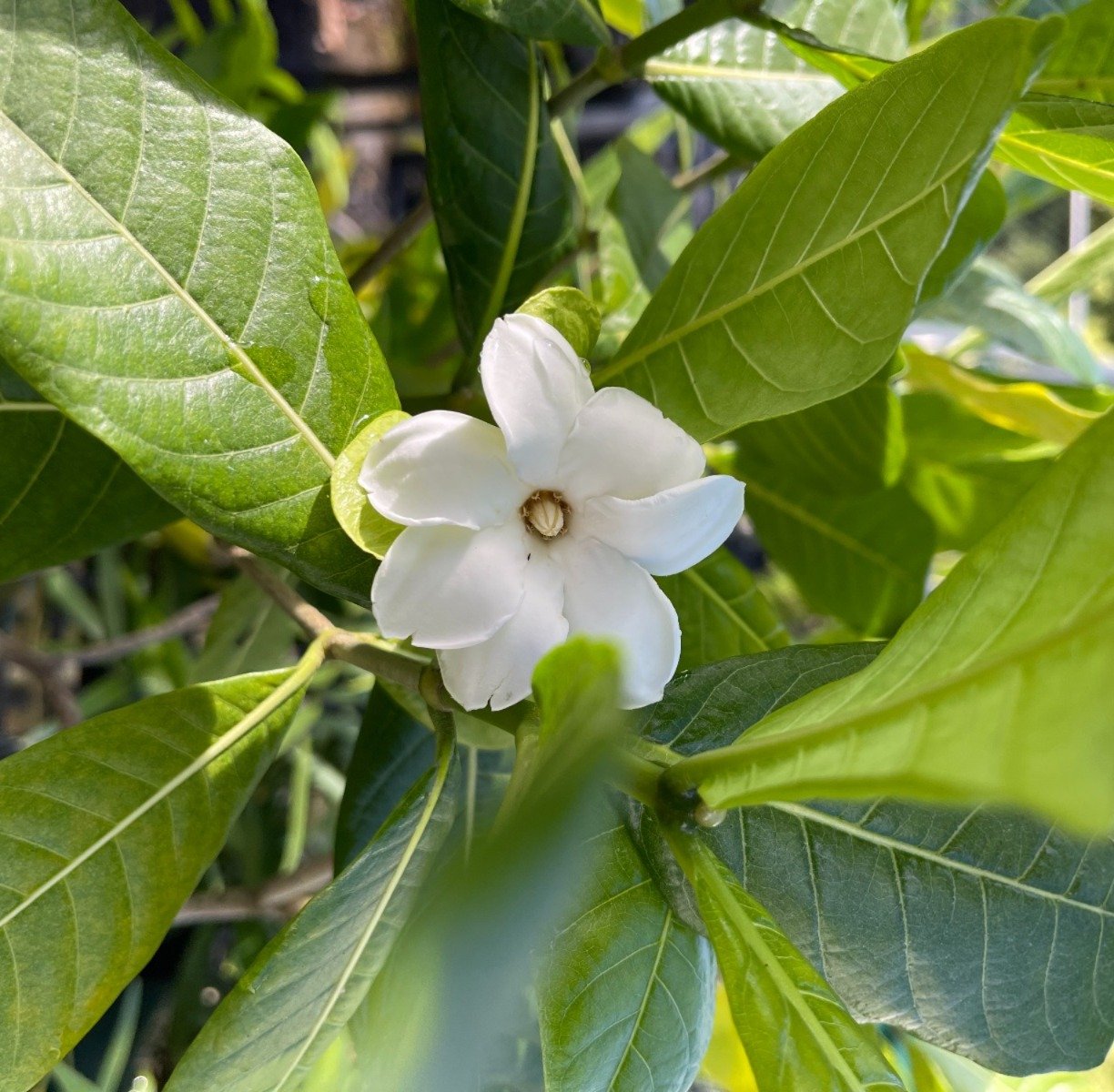
Here’s the short information chart for Nanu-i-Pua (Gardenia remyi):
| Attribute | Description |
|---|---|
| Botanical Name | Gardenia remyi |
| Common Name | Nanu-i-Pua |
| Plant Type | Shrub or small tree |
| Zones | 10-11 (Tropical and subtropical regions) |
| Sun Exposure | Partial shade to full sun |
| Soil Type | Well-draining, acidic soil |
| Watering | Regular, prefers consistent moisture |
| Growth Habit | Evergreen shrub or small tree with a dense, rounded form |
| Height/Spread | Can reach up to 10-15 feet in height, with a spread of 6-8 feet |
| Special Features | Fragrant white flowers, glossy foliage, used in landscaping and as a specimen plant |
The nanu-i-pua, or Remy’s gardenia, is a rare and endangered Hawaiian gardenia species featuring fragrant white flowers with a distinctive yellow center. It is found only on certain Hawaiian Islands and is protected by conservation efforts.
Fun Fact: The nanu-i-pua flower was highly prized by Hawaiian royalty for its intense fragrance and was used in traditional leis and ceremonies.
26. Poppy
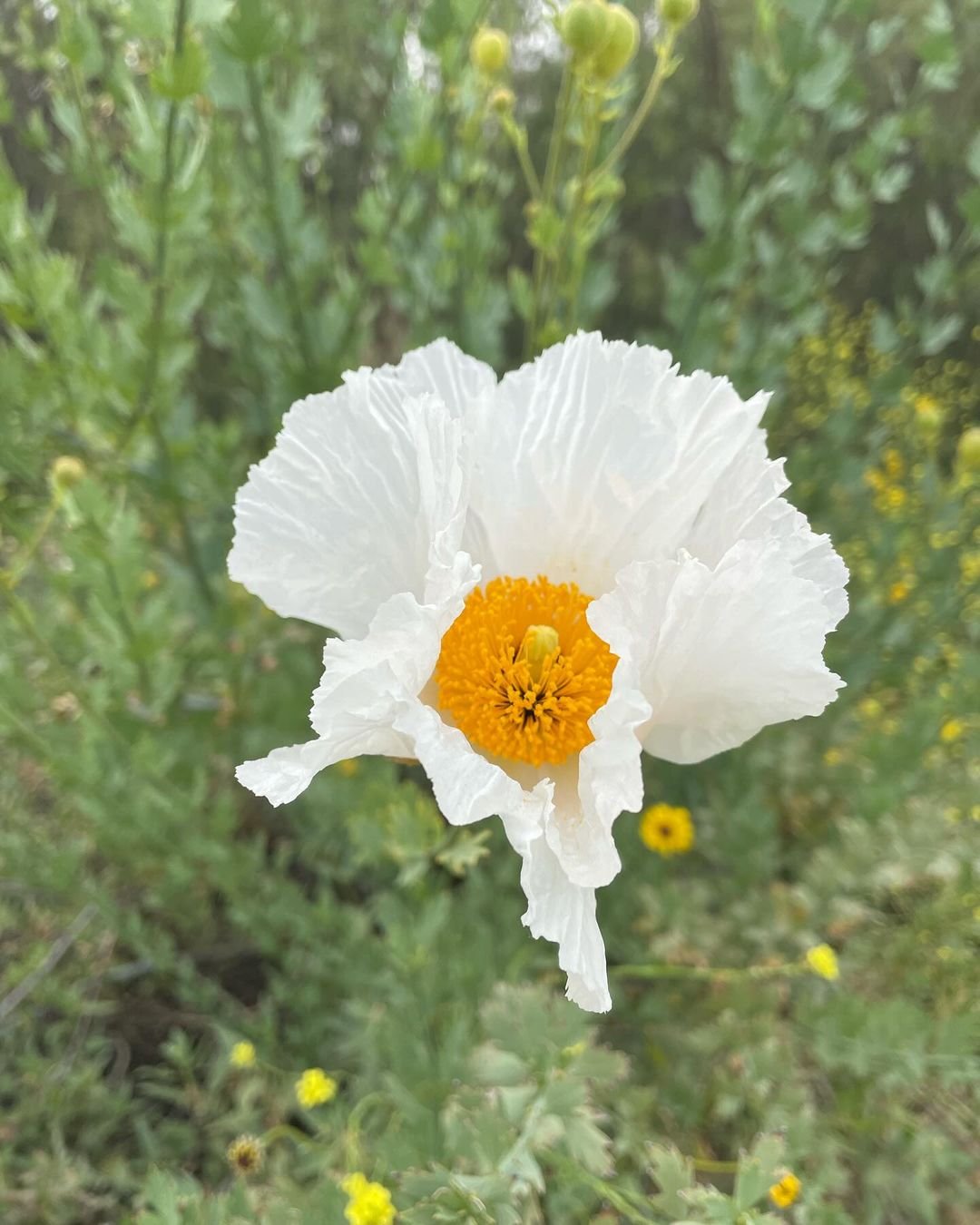
Here’s the short information chart for Poppy (Argemone glauca):
| Attribute | Description |
|---|---|
| Botanical Name | Argemone glauca |
| Common Name | Poppy |
| Plant Type | Herbaceous annual or biennial |
| Zones | 8-11 (Tropical and subtropical regions) |
| Sun Exposure | Full sun |
| Soil Type | Well-draining soil |
| Watering | Drought-tolerant, prefers dry conditions |
| Growth Habit | Erect stems with spiny leaves |
| Height/Spread | Typically grows 1-3 feet tall |
| Special Features | Yellow or white flowers, prickly seed capsules |
The poppy, also known as the pua kala, is a vibrant yellow flower with delicate petals and a distinctive center. Despite its beauty, this flower has a fascinating history in Hawaiian culture.
Fun Fact: The pua kala was once used as a natural dye for clothing and tattoos by ancient Hawaiians, and its sap was also believed to have medicinal properties.
27. Papala Kepau
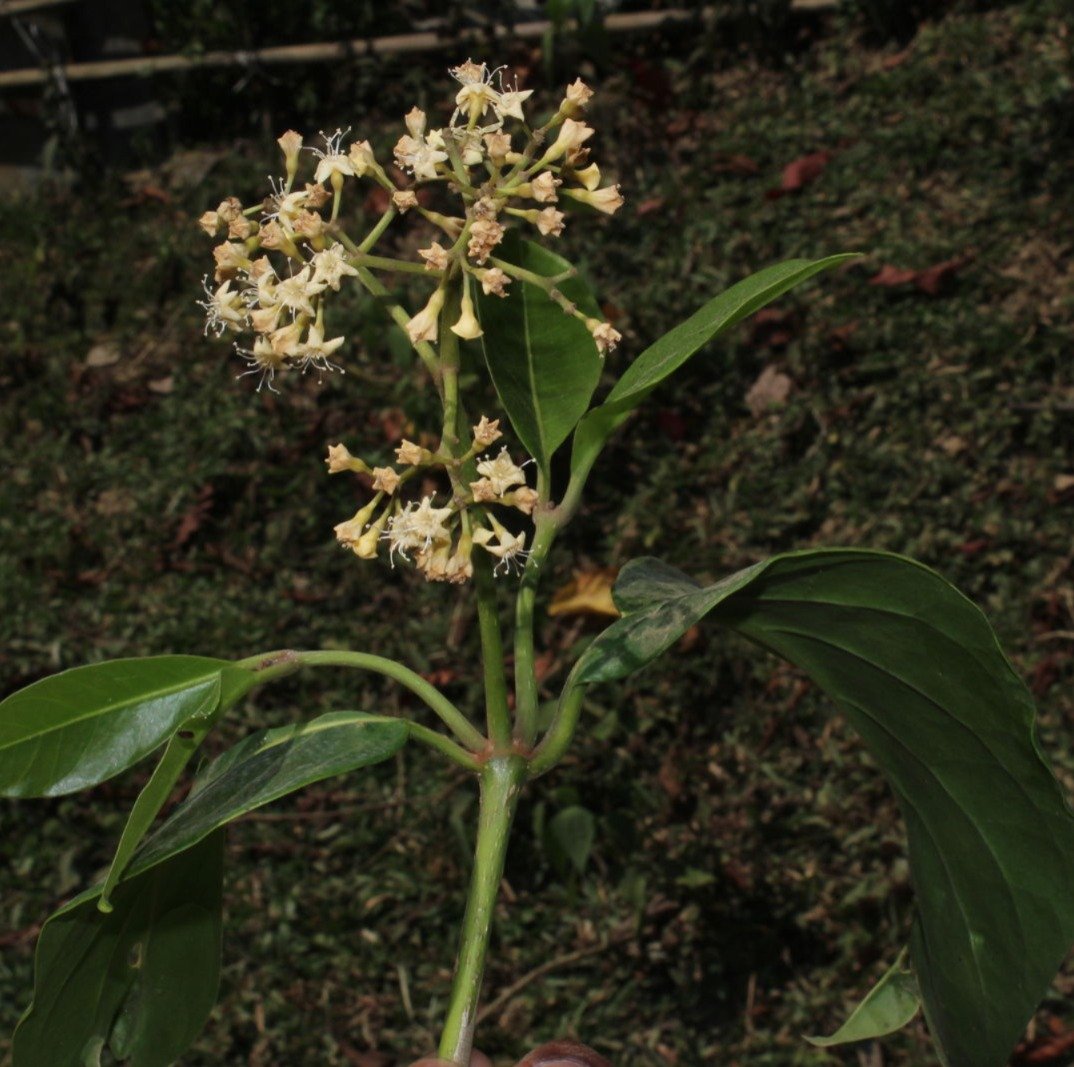
Here’s the short information chart for Papala Kepau (Pisonia umbellifera):
| Attribute | Description |
|---|---|
| Botanical Name | Pisonia umbellifera |
| Common Name | Papala Kepau |
| Plant Type | Shrub or small tree |
| Zones | 10-11 (Tropical and subtropical regions) |
| Sun Exposure | Partial shade to full sun |
| Soil Type | Well-draining soil, tolerates various soil types |
| Watering | Moderate, drought tolerant once established |
| Growth Habit | Evergreen shrub or small tree with a spreading habit |
| Height/Spread | Typically grows 6-15 feet tall, with a spread of 6-12 feet |
The papala kepau is a unique coastal tree that produces small, greenish-white flowers followed by sticky, fluffy seeds. While not particularly showy, this tree holds special significance in Hawaiian culture.
Fun Fact: The sticky seeds of the papala kepau were traditionally used by Native Hawaiians to catch birds for food and feathers, which were used in various cultural practices.
28. Koki’o Ke’oke’o
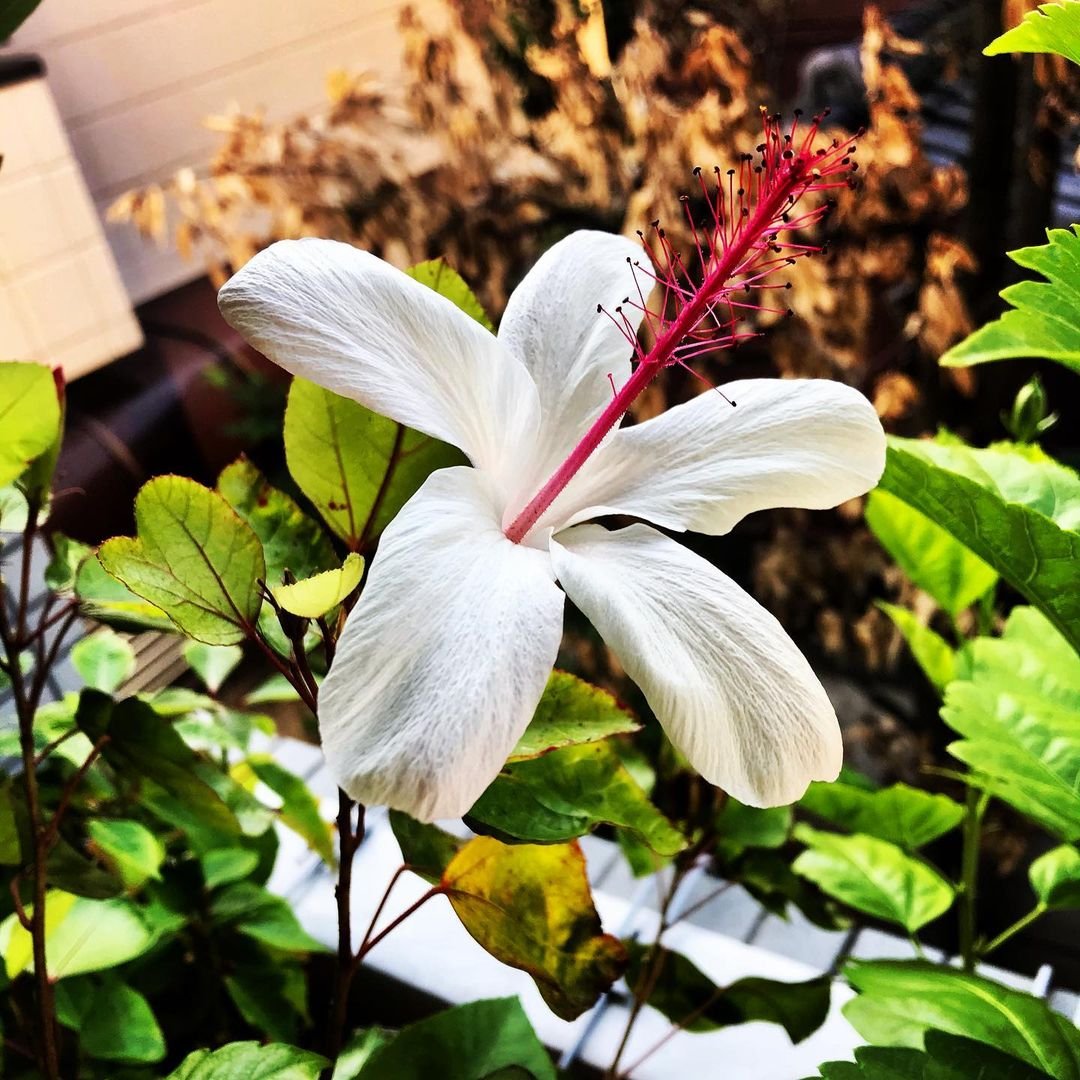
Here’s the short information chart for Koki’o Ke’oke’o (Hibiscus arnottianus):
| Attribute | Description |
|---|---|
| Botanical Name | Hibiscus arnottianus |
| Common Name | Koki’o Ke’oke’o |
| Plant Type | Shrub or small tree |
| Zones | 9-11 (Tropical and subtropical regions) |
| Sun Exposure | Full sun to partial shade |
| Soil Type | Well-draining soil, rich in organic matter |
| Watering | Regular watering, prefers consistent moisture |
| Growth Habit | Evergreen shrub or small tree with a rounded form |
| Height/Spread | Typically grows 6-15 feet tall, with a spread of 6-10 feet |
| Special Features | Large white flowers with red centers, attracts pollinators, used in landscaping |
The koki’o ke’oke’o is a rare and endangered species of Hawaiian white hibiscus. Its delicate, pure white petals and golden center make it a true gem among Hawaiian flowers.
Fun Fact: The koki’o ke’oke’o was once widely used in traditional Hawaiian lei-making and is now the focus of conservation efforts to preserve this unique and culturally significant flower.
29. Awapuhi Kuahiwi
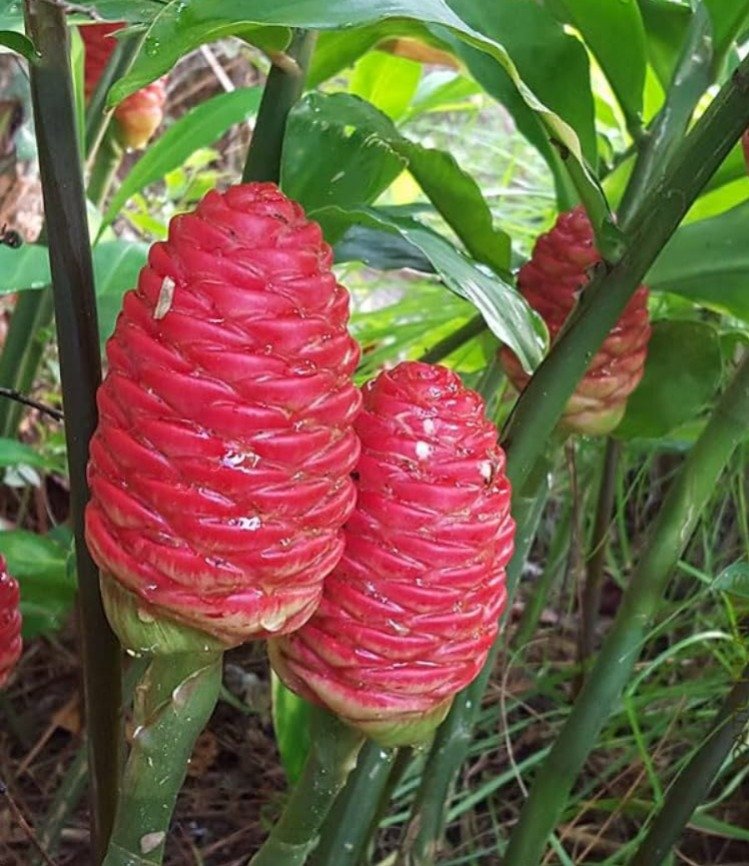
Here’s the short information chart for Awapuhi Kuahiwi (Ginger species):
| Attribute | Description |
|---|---|
| Botanical Name | Various ginger species |
| Common Name | Awapuhi Kuahiwi |
| Plant Type | Herbaceous perennial |
| Zones | 9-11 (Tropical and subtropical regions) |
| Sun Exposure | Partial shade to full sun |
| Soil Type | Well-draining soil, rich in organic matter |
| Watering | Regular watering, prefers consistently moist soil |
| Growth Habit | Clumping habit with tall stems and broad leaves |
| Height/Spread | Varies depending on species, typically 2-4 feet tall with a spread of 2-3 feet |
| Special Features | Fragrant flowers, used in traditional medicine and culinary applications |
The awapuhi kuahiwi is a striking Hawaiian ginger species with vibrant red and yellow cones surrounded by lush green bracts. These unique flowers add a tropical flair to Hawaiian gardens and landscapes.
Fun Fact: In Hawaiian culture, the awapuhi kuahiwi was traditionally used in various ceremonies and rituals, and its roots were believed to have medicinal properties.
30. Hau
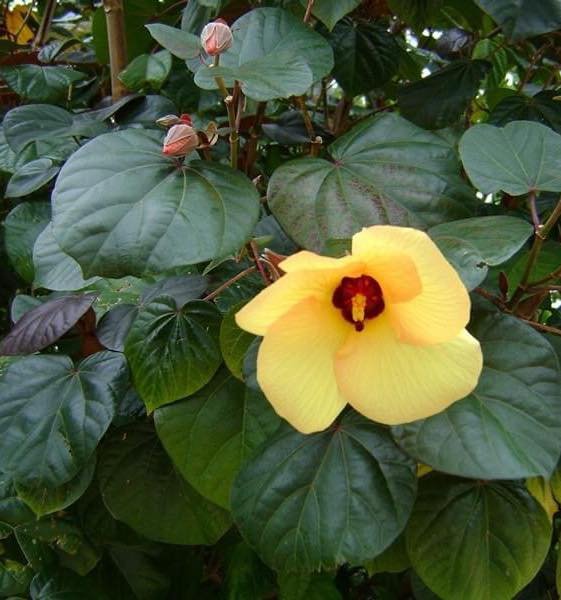
Here’s the short information chart for Hau (Hibiscus tiliaceus):
| Attribute | Description |
|---|---|
| Botanical Name | Hibiscus tiliaceus |
| Common Name | Hau |
| Plant Type | Tree or large shrub |
| Zones | 10-11 (Tropical and subtropical regions) |
| Sun Exposure | Full sun to partial shade |
| Soil Type | Well-draining soil, tolerates salt and sandy soils |
| Watering | Moderate, drought tolerant once established |
| Growth Habit | Evergreen tree or large shrub with a spreading form |
| Height/Spread | Typically grows 15-30 feet tall, with a spread of 10-20 feet |
| Special Features | Yellow flowers, heart-shaped leaves, used in coastal landscaping |
The hau is a coastal tree with distinctive yellow flowers that resemble hibiscus blossoms. This hardy plant is a common sight along Hawaiian shorelines and plays an important role in Hawaiian culture.
Fun Fact: The strong, fibrous bark of the hau tree was traditionally used by Native Hawaiians to make ropes, nets and even clothing. While its flowers were used in lei-making and other cultural practices.
Throughout this guide, we’ll delve into the names, pictures and fascinating facts of 30 remarkable Hawaiian flowers, providing you with a comprehensive and engaging exploration of these floral treasures. Get ready to be transported to a world of vibrant colors, intoxicating fragrances and captivating stories that celebrate the rich diversity of Hawaii’s botanical heritage.

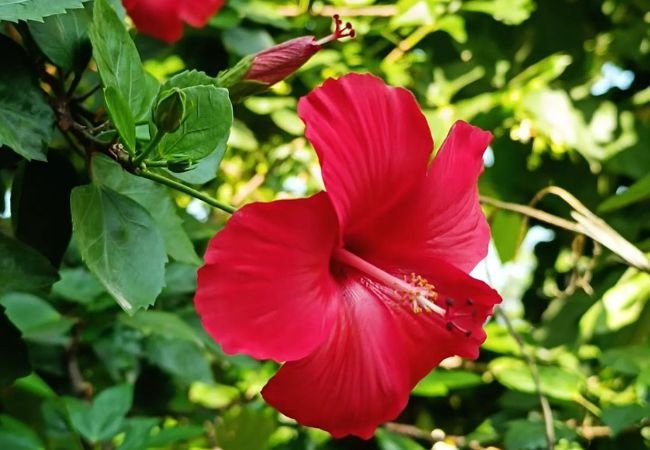

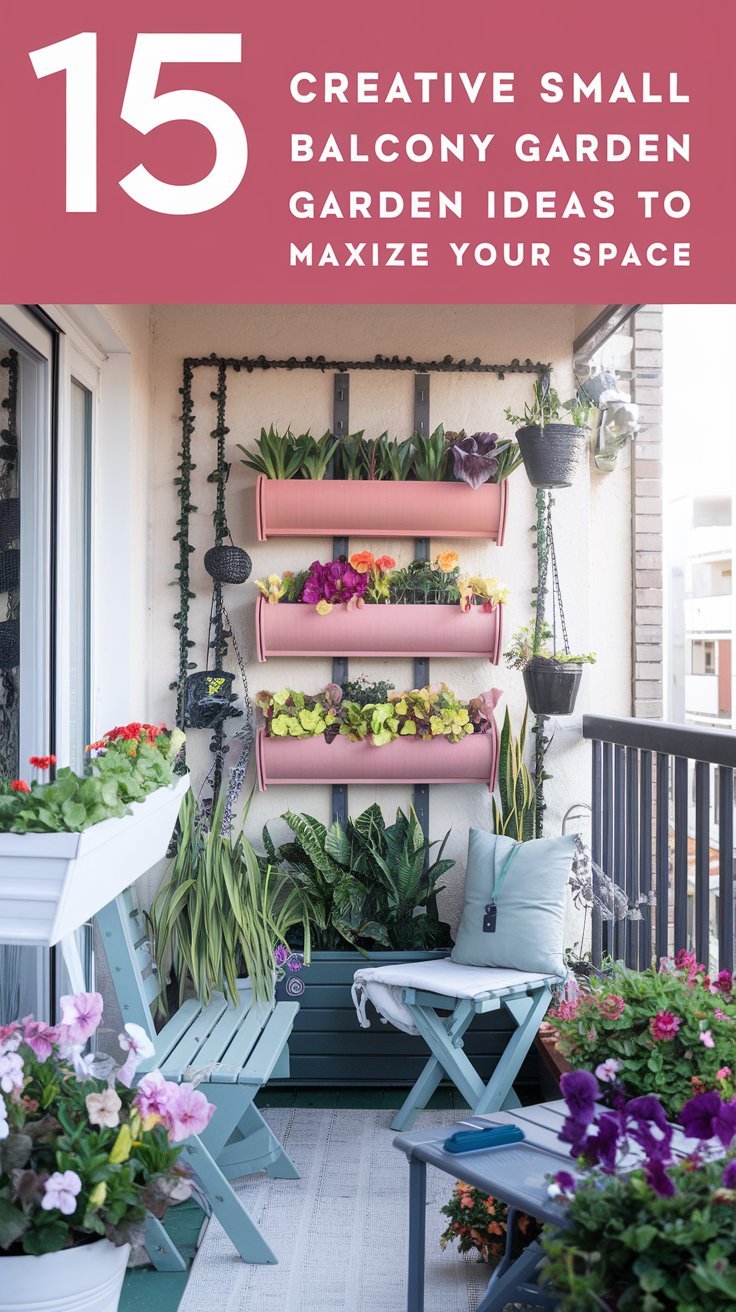




Leave a Reply